#andalusian port city
Text
10th part of the bookscans of Al Andalus. Historical Figures, here's the previous part

The Andalusian Vikings
The reign of Abd al-Rahman II was rich in events and one of them, that spread terror on the Andalusian coasts, was the arrival of the Vikings or Normans, whom the Muslims called machus, a word that could
translate as “idolaters” or “fire worshipers.”
Both Arab and Christian sources record, in their chronicles, the arrival to the coasts of the Iberian Peninsula from those fearsome pirates, who devastated, robbed and killed, wreaking havoc among the peaceful people and whose sad memory remained for a long time.
In the year 844 these pirates made an appearance on the Atlantic coast of the
Peninsula. It was the first time they had come there, although the year before,
They had taken the French city of Nantes, and going up the Loire they had
entered the Gironde River, reaching Bordeaux and Toulouse, through the Garonne.
One of their fleets moved south and the Normans landed in the coast of Asturias, very close to the city of Gijón. Then there was another disembark in Galicia, at the height, more or less, of A Coruña. There they were rejected and followed the direction of the Muslim Atlantic coasts.
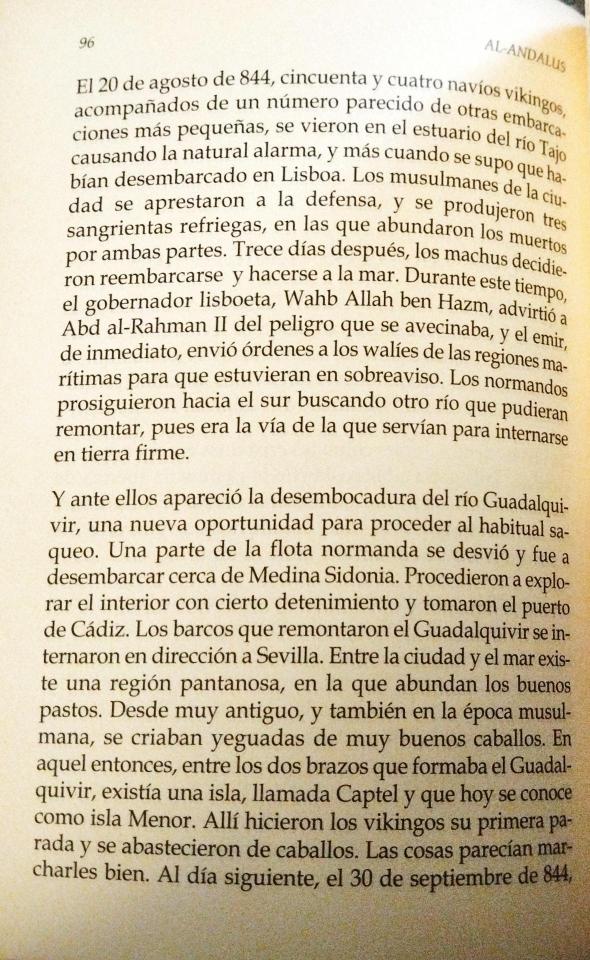
On August 20, 844, fifty-four Viking ships, accompanied by a similar number of other smaller vessels were seen in the estuary of the Tagus River causing natural alarm, and even more so when it was learned that they had landed in Lisbon. The Muslims of the city prepared the defense, and there were three bloody skirmishes, in which there were many dead on both sides. Thirteen days later, the Machus decided
reembark and put to sea. During this time, the Lisbon governor, Wahb Allah ben Hazm, warned Abd al-Rahman II of the danger ahead, and the emir immediately sent orders to the walis of the maritime regions so that they were on notice. The Normans continued south looking for another river that they could go up, since it was the route they used to go into dry land.
And before them appeared the mouth of the Guadalquivir river, a new opportunity to proceed with the usual looting. A part of the Norman fleet diverted and landed near Medina Sidonia. They proceeded to explore the interior at some length and took the port of Cádiz. The ships who went up the Guadalquivir headed towards Seville. Between city and the sea there is a swampy region, in which there are good
pastures. Since ancient times, and also in Muslim times, they were raised studs of very good horses. Back then, between the two arms that formed the Guadalquivir, there was an island, called Captel and which today is known as Minor Island. There the Vikings made their first stop and supplied themselves of horses. Things seemed to be going well. The next day, the 30th September 844,

Four ships reached the town of Coría del Río, located about four kilometers away from Captel. They disembarked, proceeded to total looting and murdered the population, in one of their typical performances.
Three days later the Norman fleet. continued upriver and before the frightened eyes of the Sevillians, the black sails of the pirate ships appeared.
The sad fate of the inhabitants of Coria del Río was known, and the terrified citizens rushed to organize themselves to resist, but the governor, no more scared than the others!, had fled towards Carmona. Lacking direction, they did what they could, sending to meet the machus' fleet
some ships, which were received with a shower of incendiary arrows and they all burned without any possibility of defense.
Seville was evacuated as quickly as possible, although not everyone left the city, some because of their health status, others because they are elderly and others
because they did not want to abandon their property, a useless precaution, since the Vikings, landing in Seville, killed them all. Women and children were taken captive, while a horrific looting of the city was carried out, which lasted seven days.
So much loot was obtained that the Norman ships were overcrowded, so much
of wealth and of frightened Muslim women who did not know what was going to happen to them in the hands of those barbarians from the north. They decided to return to base that they had established in Captel and disembark everything they had achieved, it was impossible to continue sailing with such an abundant and precious cargo.
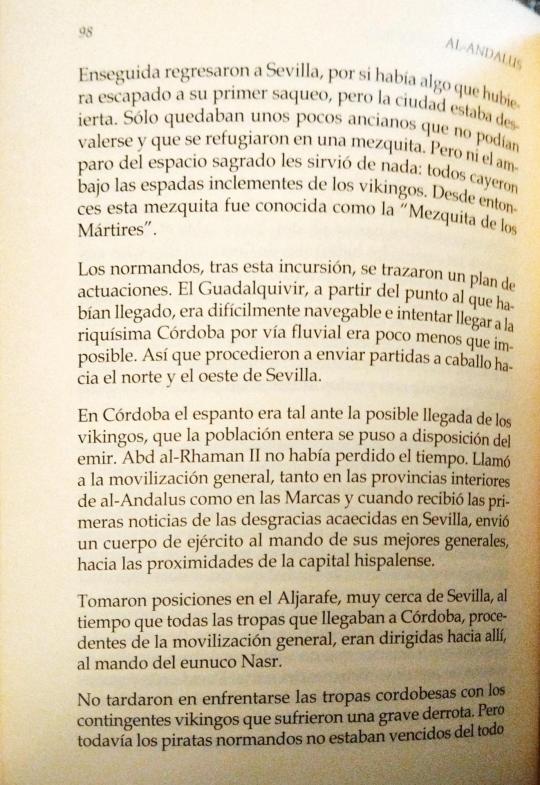
They immediately returned to Seville, in case there was anything that had escaped their first looting, but the city was deserted. There were only a few old people left who did not could help themselves and took refuge in a mosque. But not even the protection of sacred space was of no use to them: they all fell under the merciless swords of the vikings. Since then this mosque was known as the "Mosque of the
Martyrs".
The Normans, after this raid, drew up a plan of action. The Guadalquivir, from the point they had reached, was difficult to navigate and trying to reach the rich Córdoba by river was almost impossible.
So they proceeded to send horse parties to the north and west of Seville.
In Córdoba the fear was such at the possible arrival of the Vikings, that the entire population was placed at the disposal of the emir. Abd al-Rhaman II had not lost time. He called for general mobilization, both in the interior provinces of Al Andalus and in the Marches and when he received the first news of the misfortuned events in Seville, he sent an army under the command of his best
general, towards the outskirts of the capital of Seville.
They took up positions in Aljarafe, very close to Seville, while all the troops arriving in Córdoba, from the general mobilization, were headed there, under the command of the eunuch Nasr.
It didn't take long for the Cordoban troops to clash with the Viking contingents that
suffered a serious defeat. But still the Norman pirates were not completely defeated
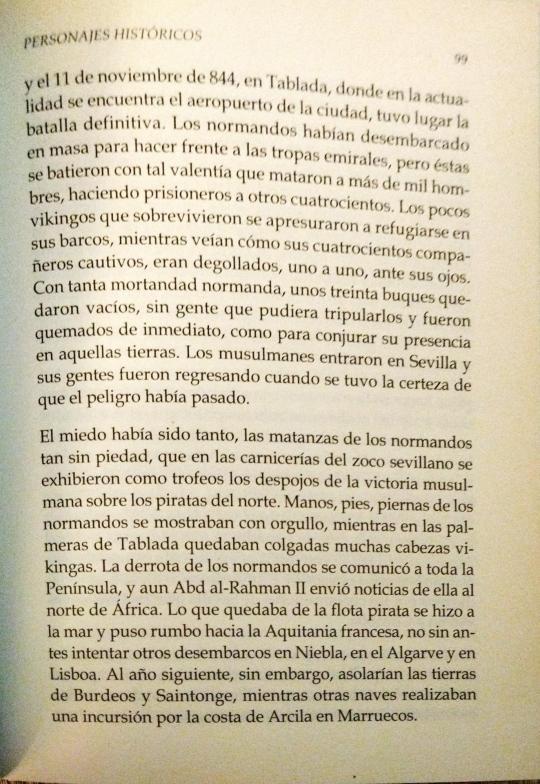
and on November 11, 844, in Tablada, where the city airport is nowadays located, the final battle took place. The Normans had landed en masse to confront the emiral troops, but they fought with such bravery that they killed more than a thousand men, taking prisoners to another four hundred. The few Vikings who survived rushed to take refuge in their ships, while they saw how their four hundred companions captives, their throats were beheaded, one by one, before their eyes. With so much Norman mortality, about thirty ships were left empty, without people who could man them and they were burned immediately, as if to ward off their presence in those
land. The Muslims entered Seville and its people returned when it was certain that the danger had passed.
The fear had been so great, the massacres of the Normans so mercilessly, that in
the butcher shops of the Sevillian souk, the remains of the Muslim victory over the northern pirates were shown as trophies. Normans hands, feet, legs, were showed with pride, while in the palm trees of Tablada many Viking heads were left hanging. The defeat of the Normans was communicated to the entire Peninsula, and even Abd al-Rahman II sent news of it to North Africa. What remained of the pirate fleet put to sea and headed towards the
French Aquitaine, but not before attempting other landings in Niebla, in the
Algarve and in Lisbon. The following year, however, they would ravage the lands of Bordeaux and Saintonge, while other ships made a raid along the coast of Asilah in
Morocco.
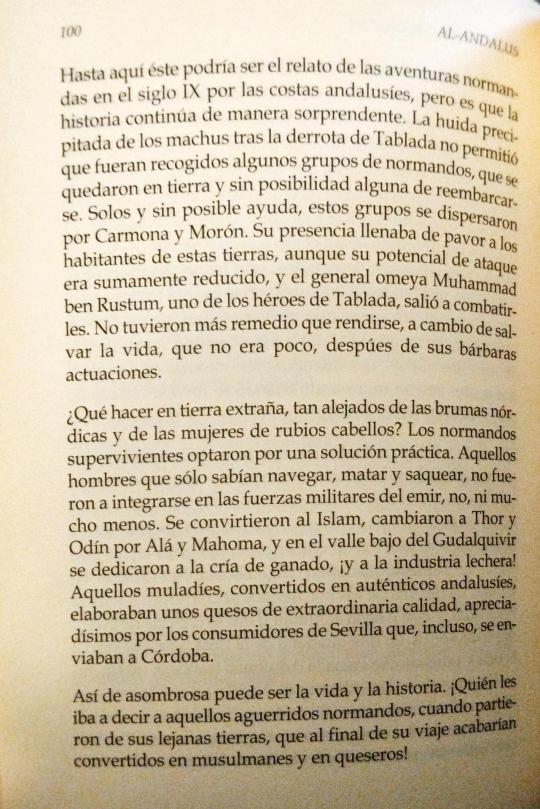
Up to this point this could be the story of the Norman adventures in the 9th century along the Andalusian coasts, but the story continues in an amazing way. The hasty flight of the Machus after the defeat of Tablada did not allow some groups of Normans to be collected, whichwere left on land and without any possibility of reembarking. Alone and without possible help, these groups dispersed through Carmona and Morón. Their presence filled the inhabitants of these lands with dread, although its potential for attack was extremely small, and the Umayyad general Muhammad ben Rustum, one of Tablada's heroes, went out to fight them. They had no more choice but to surrender, in exchange for saving one's life, which was no small thing, after their barbaric actions.
What to do in a strange land, so far from the Nordic mists and the women with blonde hair? The surviving Normans opted for a practical solution. Those men who only knew how to navigate, kill and loot, they were not going to join the emir's military forces, no, not at all. They converted to Islam, changed Thor and Odin for Allah and Muhammad, and in the lower valley of the Gudalquivir they dedicated themselves to cattle raising, and to milk industry! Those muladíes, converted into authentic Andalusians, made cheeses of extraordinary quality, greatly appreciated by consumers from Seville that were even sent to Córdoba.
That's how amazing life and history can be. Who was going to tell those brave Normans, when they left their distant lands, which at the end of their trip they would end up becoming Muslims and cheese makers!
#al andalus historical figures#al andalus personajes históricos#book scans#bookblr#historyblr#al andalus#al andalus history#emirate of cordoba#emirato de córdoba#history#andalusian vikings#vikingos andalusíes#spanish history#muhammad ibn rustum#nars#abd al rahman ii#abd al rahman ii of córdoba#nars abul-fath
9 notes
·
View notes
Text
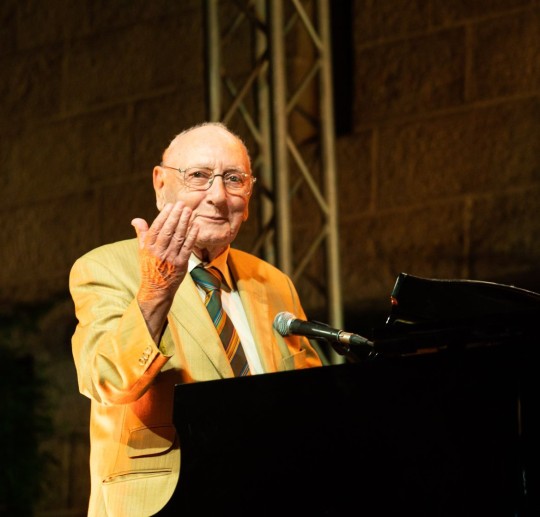
The musician Maurice el Médioni, who has died aged 95, provided a reminder that there was a time – in the period between the second world war and Algerian independence in 1962 – when Muslim and Jewish musicians worked together in Algeria to transform the country’s popular music.
He was a pianist who could play, and blend together, almost any musical style. His left hand might pump out stomping boogie rhythms while his right hand played Arabic or Andalusian styles. He could switch from French chanson and cabaret to Latin themes, and he played a key role in the development of the Algerian styles chaabi and raï.
El Médioni described his early life in the Algerian port city of Oran as “playing in bars and at Arabic marriages or Jewish weddings or playing in a big chaabi orchestra for the Algiers radio station. I started out playing boogie-woogie that I learned from the Americans, then Latin music, flamenco and Andalusian music. I was one of the first to do that and brought it into Arabic music, and now they love it.”
He was a star in Algeria in the 1950s, but then came the Algerian war, independence and the large-scale exodus of the Jewish population. El Médioni left for Israel in 1961, but when he realised that many of his exiled musician friends had moved to Paris he decided to join them. There he worked as a tailor by day and a musician by night – a lifestyle he continued when he moved to Marseille in 1967.
After decades in the musical wilderness, El Médioni eventually built an international reputation when in his 60s. The French producer Francis Falceto (creator of the Éthiopiques series) heard a cassette of El Médioni’s music and played it to the British musician and producer Ben Mandelson. Mandelson produced a recording session in Berlin, with El Médioni playing alongside some of his own musician friends and some British musicians, and the resulting album, Café Oran (1996), introduced his unique piano style to a new audience.
He followed with the album PianOriental (2000) and in the same year played at the Soul of Algeria concert at the Barbican in London, accompanying his old friend the Jewish Algerian singer Lili Boniche, in a line-up that included the Algerian “grandmother of raï”, Cheikha Rimitti.
In 2003 he opened for the British band Oi Va Voi and then joined them for the encores at shows at the ICA in London, and in Moscow and Los Angeles, and in 2006 released Descarga Oriental with the Cuban percussionist Roberto Rodriguez. Recorded in New York, the album was a reminder that Latin styles were among those he had loved and learned back in Oran. The album won a BBC Radio 3 World Music award.
The following year El Médioni played a major role in the El Gusto project, which involved an album, a film and a series of concerts that reunited Muslim and Jewish musicians from Algeria. He had declined to appear at a concert in Algeria, saying it was “not the right time” to return, but starred in an emotional show in Marseille that ended with a rousing version of the Algerian favourite Ya Rayah. In 2008 there was a further reunion with Algerian musicians as he opened for Khaled, raï’s biggest international star, at the Barbican; he had earlier played on Khaled’s 2004 album Ya-Rayi.
In 2011, and by now in his 80s, El Médioni and his wife, Juliette (nee Amsallem), whom he married in 1953, moved to Israel to live close to their children. He continued to record and perform, working with the Orchestra Ashkelon and the singer Neta Elkayam, and was a major influence on young Israeli pianists. He returned to London in 2012 to play with the Iraqi oud player Khyam Allami.
Born in Oran, in French Algeria, Maurice was one of four siblings brought up by their mother, Fany, following the death of their father, Jacob. Jacob had run the Café Saoud in the city’s Jewish quarter along with his brother, Messaoud El Médioni, the renowned musician better known as Saoud l’Oranais. Maurice attended the Ecole St André, and started to learn the piano when he was nine, playing by ear and listening to the musicians who gathered at the cafe.
He incorporated anything that he heard into his playing, learning Latin, jazz and boogie-woogie from the black American GIs who arrived in the city after the liberation of Oran in 1942. He played in clubs popular with the soldiers, and made sure his audience heard the music they wanted. He also composed and played for the big names of the Jewish Algerian cabaret scene, including Boniche and Line Monty. He had been persuaded by his mother to follow a career as a tailor, but music was his passion.
In 2017 he published his memoir From Oran to Marseilles (1936-1990) with help from his British followers. The preface was by Mandelson, the foreword, translation and interviews were by Jonathan Walton (a former member of Oi Va Voi, who uses the name Lemez Lovas as a musician), and the editor was the broadcaster and musician Max Reinhardt, who described him as “charming, open-hearted, wise and witty … a compulsive musician who couldn’t wait to get near a keyboard”.
Juliette died in 2022. El Médioni is survived by his children, Yacov, Marilyne and Michael, and five grandchildren, Jeremie, Barbara, Benjamin, Nourit and Emmanuel.
🔔 Maurice el Médioni, musician and songwriter, born 18 October 1928; died 25 March 2024
Daily inspiration. Discover more photos at Just for Books…?
6 notes
·
View notes
Text
The truth and nothing but the truth...
… is how I wished historiography worked. In reality, stuff is so hard to figure out. Sorry if this yet another rant but I’m so often out of my wits these days. Just as an example, one of the questions that contemporary historians already could not decide upon was: Who was responsible for Cadiz?
Context: After all the setbacks during 1809 the battle of Ocana in November 1809 had stabilized Joseph’s situation as King of Spain somewhat. (That battle, by the way, historians today seem to credit Soult for, who was in overall command, whereas at the time the victory was attributed to Mortier and Joseph.) The Spanish army had been routed, Wellington hastily retreated towards Portugal, the Junta of Sevilla, leading the insurrection against the French invasion, lost lots of credit, and the francophile party got the upper hand.
In this situation, Joseph saw an opportunity to occupy southern Spain, i.e., Andalusia, capturing both Sevilla, seat of the insurrectional junta, and Cadiz, a strategic port and almost impregnable fortress that would later become so important as a bridgehead for British forces. Joseph and his aides in their memoirs point out how this campaign had been Joseph’s very own idea, and how he had to convince a hesitating Soult about it, who in the absence of orders by Napoleon even demanded a written order from Joseph.
Except that at the time contemporaries (both French ambassador Laforest and Napoleon’s police spy Lagarde) had the impression that this was in truth Soult’s brain child, and that he had only spoon fed the idea of an Andalusian invasion to Joseph. They added that Soult was taking with him all his belongings as if he planned for a very long stay away from the capital and that he was obviously extremely happy to get Joseph out of Madrid and onto this campaign, where Joseph would be totally at Soult’s mercy and Soult the only one in charge.
Whereas Soult at the same time wrote home to his wife that he was hoping for a brief campaign and that then he would finally get his congé, leave for Paris and see his family again. (Which would also explain a somewhat less sour expression on the face of Monsieur de Maréchal.)
Anyway. Whoever came up with the idea: In January 1810, the French army, with both Joseph and Soult at its head, set out for Andalusia. All went fine, barely any resistance, Joseph even met with some enthusiasm on the way – and then, at some point, they had to decide where to go: Sevilla, the capital, or Cadiz, before the rebels had the time to fortify it and lock themselves up behind its impregnable walls?
Let’s first hear general Bigarré, one of Joseph’s aides-de-camp:
Some author of the "Victoires et Conquêtes", who every time he had to speak about King Joseph did so with indecent bitterness, still blames him, in the account he gives of the Andalusian expedition, for the delay that the French army incurred in marching on Cadiz.
I can attest, as a witness of what happened at that time, that the king was on the contrary strongly of the opinion that one should make the corps of Marshal Mortier march to the Isle of Leon, without waiting for the result of the course of General Sébastiani on Malaga. But Marshal Soult and General Dessoles, who had a say in the matter, represented to His Majesty that one could not without imprudence pass further forward, without having previously subjected Seville, Granada and Malaga. The advice of these two generals prevailed over the king's opinion, and it was agreed that we would wait until these three cities were occupied by our troops before directing a column to Cadiz.
Well, that’s pretty clear. Bigarré’s tale is supported by the memoirs of Miot de Mélito, another of Joseph’s close co-workers and another eye witness. He relates that Joseph and his staff reached Carmona on January 30 and stayed there for a day, during which time the decision was made to march on to Sevilla instead of Cadiz. After having explained why it would have been so much more important to take on Cadiz first, he resumes:
These reflections, which were easy to make, were made, but were not listened to. The same error that led to the failure of all our operations in Spain was again the cause of this irreparable fault. One believed to find in Seville the end of the war, as, a year before, one had believed to find it in Madrid, and one was so persuaded that the goal and the fruit of the expedition were in Seville, that being at dinner at the king's house in Carmona, with his ministers and several generals, I heard Marshal Soult declare himself highly in favour of the march on Seville and say: "Let somebody account for Sevilla, and I will account for Cadiz! [Qu’on me réponde de Séville, et je réponds de Cadiz! - Not convinced I got the meaning of this entirely correct.]" - The event has only too well proved the error into which this clever general had fallen.
There we have it. The two of them do not quite agree on the reason for this fatal decision (extreme military caution or a misjudgement about the importance of taking the capital) but one thing they make clear: Soult’s at fault.
And finally, from the "Souvenirs sur Joseph Bonaparte" by Joseph's former page Abel Hugo (that's the brother of writer Victor Hugo, in case somebody wondered):
The king wanted to end the war, he was of the opinion to march on Cadiz; the major-general [Soult] opted to enter Seville first. The marshal had for him the authority of a great military reputation and the secret sympathies of the generals, whom the prolongation of the war made masters of the Spanish provinces. He brought the majority of the council round to his opinion, saying: "Let me take Seville, and I will answer for Cadiz." [A slightly different wording from what Miot had heard.] The king was obliged to yield, in the conviction, however, that his opinion was better than that of the marshal.
The only thing I would dispute here is in how far Joseph was "obliged to yield"; he was the king, after all, and could have insisted on his plan, like he allegedly had - as Hugo relates in great detail only a couple of pages earlier - insisted on starting the Andalusian campaign in the first place, in opposition to what Soult suggested. But I digress.
Let’s hear the other side then. What do Soult’s boys have to say about this in his defence?
Unfortunately, nothing at all. Saint-Chamans, for once, does not take a side, he merely laments that three full days were lost in discussions about where to go first. Petiet is too furious about Soult at this point to notice any such military trifles – after all, Soult had just withheld a gratification from his aides that Joseph had meant to give them! (This sounds like a fun story in itself that I have to look into more 😁.) And Brun was on a mission in Paris to congratulate Napoleon on his divorce and remarriage and only joined the marshal again after the events. The only one to claim that Soult had been the one who suggested Cadiz should be occupied first is – Soult himself in his memoirs.
For once, everything seems totally obvious. It’s a clear 3 – 0 result in favour of Joseph. Sorry, Monsieur le Maréchal, this one is on you.
If it was not for a letter that Nicole Gotteri apparently dug up from the war archives, for her biography of Soult. It’s dated Cordoba, 26 January 1810 (i.e., some days before the discussions in Carmona that Miot and Hugo described), and written by Soult to his fellow marshal Victor:
[…] You will direct yourselves with the first army corps on the first of these two cities [Seville]; but, when you are in Carmona, you will send a strong reconnaissance to make sure of the disposition of the inhabitants, and if it appears to you that in Sevilla they do not wish to resist in any way, but on the contrary want to yield to you, you will take possession of it by a few regiments and a piquet of cavalry [...]. Once these arrangements have been made, you will march immediately by the direct route to Cádiz and you will even press your movements so that the enemies will not have time to organise their defence.
Whoops. Bummer. An order by Soult to immediately march on Cadiz. There goes the certainty.
So, what did really happen? Don’t look at me for an answer, I have no clue. Was Victor not sure of Sevilla’s intention and did thus not follow Soult’s instructions? Did Soult for some reason have a total change of heart between the 26th and the 30th of January? Are all three witnesses in favour of Joseph lying? Or had they misunderstood something? Had in truth Joseph convinced Soult of marching on Sevilla, instead the other way around? Is the letter Nicole Gotteri found in the War archives a forgery? (It would not be impossible, considering that Soult was in charge of the ministry of war several times and could easily have placed documents there in order to exculpiate himself.)
The only thing that is for sure: Victor’s corps did not march on Cadiz, but took part in King José’s big and glorious entry into the city of Sevilla on February 1. It was only sent in the direction of Cadiz the following day. They arrived just in time to see how the Spanish junta, who had fled from Sevilla, and the Spanish troops who had come in forced marches in order to fortify Cadiz, locked the gates behind themselves.
The French would never even come close to taking the town, they had lost their only chance. And the discussions about who was responsible for this apparently started immediately after the empire had fallen.
Though the funniest thing for me is to imagine Soult at the beginning of this Andalusian campaign, all hopeful because he thinks he will soon get to leave, inwardly doing the happy dance ,„Just one more campaign, and I’m done with this shit. Take me hooome, country roooaaads…“, while Laforest and Lagarde see him and go „Was that a smile on Soult’s face? Watch out, everyone, red alert, he’s bound to be cooking up some truly devious plan!“
#napoleon's marshals#napoleon's family#joseph bonaparte#jean de dieu soult#andalusia#sevilla#cadiz#spain 1812#peninsular war
15 notes
·
View notes
Text
Tailor-made experiences for Cruises from the Port of Cádiz
The Port of Cádiz is one of the most exciting destinations for cruise travelers in Spain. With a rich history dating back more than 3,000 years, this coastal city offers a fascinating mix of culture, architecture and traditions. If you are planning to disembark at the Port of Cádiz and want to make the most of your time in this Andalusian gem, you are in the right place. In this article we will…
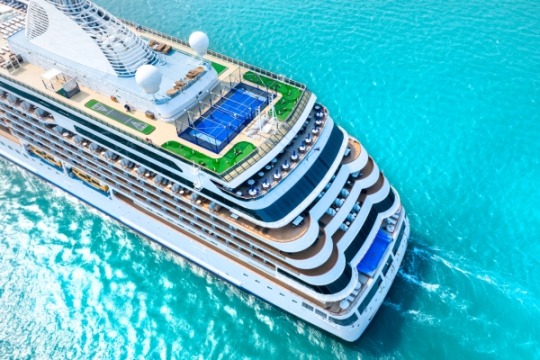
View On WordPress
0 notes
Text
Costa Del Sol: All Best Places You Must 100 % Visit


Among the leading tourist areas of the Mediterranean, it is difficult not to mention the famous Costa del Sol in Spain. Stretching over 150 km of coastline and bordered by iconic cities such as Marbella, Málaga, and Estepona, this Andalusian coastline attracts millions of holidaymakers every year in search of paradisiacal beaches, fascinating cultural visits, and, above all, sunshine all day long! Here are all the must-see places to visit on the Costa del Sol.
The must-sees in Marbella
A world-renowned destination, known for its festive atmosphere, dreamy beaches, and high-end services that delight the most demanding vacationers, Marbella attracts several million tourists from all over the world every year. But despite its reputation as a festive seaside resort, this chic destination has managed to preserve its authenticity with its typical narrow streets, lined with flowery whitewashed houses. Here are the must-sees in Marbella.
The old city of Marbella

photo credit: Raiden 1
If you want to see the picturesque face of Marbella, the old town is the place to be! Stroll through the charming alleys with your camera in hand and capture every corner of this photogenic place: between the Orange Tree Square, the splendid Town Hall, the authentic traditional houses and the typical cafes, a huge palette of colors awaits you!
Alameda Park
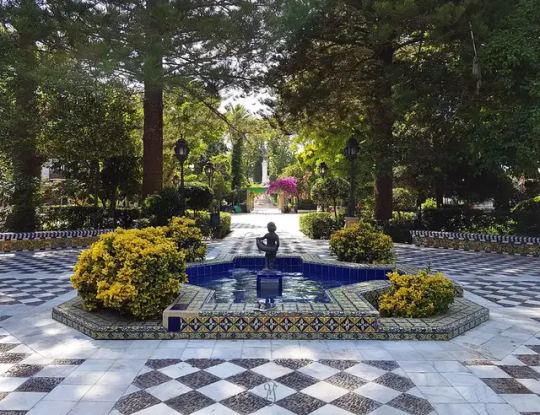
photo credit: Pedro Munoz Sanchez
A true "green lung" of the city, Alameda Park is a large area of lush vegetation in the heart of Marbella. When the sun gets heavy during the hottest hours, between noon and 2 pm, it is a real oasis of tranquility with its shady areas particularly pleasant for picnics. Lose yourself in the park, stroll the marble walkways and enjoy the refreshing breeze from the magnificent Virgen del Rocio fountain.
The wild coast of the Dunes of Artola

If you want to get away from the most touristy areas and isolate yourself in more solitary corners, head for the wild coast of the Dunes of Artola. Between land and sea, you will enjoy the invigorating sea air and the beauty of this preserved nature, dazzling at sunset.
On the beach of Cabopino, you will have the feeling of being alone in the world, and many consider it one of the most beautiful beaches in Andalusia.
Puerto Banus Marina

photo credit: Tina P
The Puerto Banus marina is a landmark for millionaires' yachts and an iconic place in Marbella. Its trendy atmosphere and posh reputation have attracted the international jet set year after year, as well as the most affluent vacationers: the streets are indeed lined with luxury boutiques and gourmet restaurants.
The Museum of Contemporary Spanish Engraving
If you are a lover of engravings, it is very likely that you will fall under the spell of the Museum of Contemporary Spanish Engraving in Marbella. In this historic Renaissance, the building exhibited various engravings, many of which were made by Picasso. The museum also organizes workshops and conferences to deepen the experience in this temple of engraving, a true national reference in this field.
Arabian fortress of Marbella
If you thought there were no historical monuments in Marbella, think again! The Arab fortress and its medieval walls are a perfect example of this, and a good example of the Muslim influence on the city's architectural identity. It is possible to visit them with a guide and learn more about this little-known facet of one of Spain's most famous seaside resorts.
Must-see places in Malaga
The birthplace of the famous painter Pablo Picasso, the port city of Malaga is inseparable from the Costa del Sol. So much so that it is for many its emblem, with its coveted urban beaches, its precious historical monuments, and its mythical medieval walls. There is so much to discover in this famous Andalusian city: here are the main places you must visit during your stay.
Málaga's Alcazaba Citadel

photo credit: Colin Hepburn
History buffs will be thrilled to see the iconic Alcazaba citadel in Málaga. This fortress was built during the Islamic era in Spain and features elements typical of the Arab architecture that is widespread in this region of Spain. You can visit it from the inside, and appreciate the remarkable preservation of its foundations, but also walk through the beautiful gardens that border the building. Finally, you'll find the remains of a Roman amphitheater at the foot of the citadel, as well as several fascinating historical museums in the surrounding area. Add to this an overlooking view of the city, and you have one of the most visited places in Malaga!
Malaga Cathedral

photo credit: Matthias Patzold
This is another emblematic monument of Malaga. The city's great cathedral was built in the 16th century, and its construction is said to have taken more than 250 years! When you arrive in front of this stone giant, you can't help but be overwhelmed by the majesty of this building with its atypical and refined architecture!
At the heart of the building, you can observe the magnificent Renaissance ornaments, before reaching the roof and enjoying the spectacular view of Málaga, and then take your camera to immortalize the moment.
Finally, to conclude your visit, take a detour to the cathedral's gardens, which are accessible free of charge. An enchanting stroll to contemplate the building from all angles.
Picasso Museum in Malaga

photo credit: Teelicht
This is one of those places that you would dedicate a whole day to visit, because it is so fascinating! The Picasso Museum in Malaga traces the career of the famous Spanish painter, known worldwide for his paintings such as Guernica and Les Demoiselles d'Avignon. Located in the heart of the magnificent Buenavista Palace, a historic building built in the 16th century, this museum exhibits more than 200 works by the artist in 11 different rooms. Here you can see the first childhood works of the man who was nicknamed "Little Goya", and understand the evolution of his style over the years.
Atarazanas Market

photo credit: Edgar I
If you want to meet the local producers of Malaga, what better way than to go to the famous Atarazanas market? Located in the heart of the city, in an old shipyard building with magnificent glass roofs, it is a friendly and popular place where locals gather in search of fresh products and good deals.
Malaga's beaches

photo credit: Mateusz jagiela
Malaga's coastline is a true paradise for vacationers seeking relaxation and for lovers of water sports. Between the pebbled and fine sandy beaches, the popular beaches, and the more discreet coves, it is impossible not to find the ideal place to lay down your towel. For example, you can rest on the soft sand of the Penon del Cuervo cove, recognizable by its famous "crow's rock" that seems to attract sand like a magnet or have fun with the kids on the Burriana playa, one of the most famous in Andalusia. Near the beach, there are rental services (kayaks, jet skis...), showers, toilets, and traditional beach restaurants.
Pompidou Center of Contemporary Art of Malaga
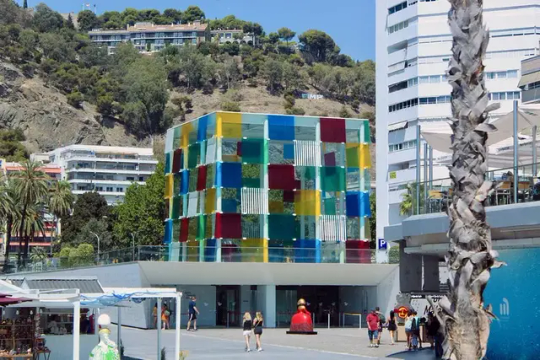
photo credit: Mike Fitzpatrick
If the weather turns bad, a visit to the Pompidou Center of Contemporary Art in Malaga could be a good alternative to the beach. This fascinating place gathers a large collection of contemporary works, which you can discover with your family. An original and entertaining visit!
Botanical garden "La Concepcion"

photo credit: Stefan Schinning
La Concepcion Botanical Garden is one of the most beautiful gardens in Europe, covering almost 3 hectares. It is inspired by ancient times and has more than 2,000 different varieties of plants from all over the world. This landscaped park has also been declared a historical and artistic garden since 1934: one thing is sure, you won't be disappointed with your visit!
The must-sees in Ronda
Proudly standing atop a mountain, the small town of Ronda is one of the most authentic on the Costa del Sol. Relatively far from the coast, people come here mainly to enjoy the calm of the interior and the preservation of mass tourism. The cultural visits to Ronda can be done in one day.
The New Bridge

photo credit: Visual coyote
A great symbol of the city of Ronda, the New Bridge was built in the eighteenth century and required more than 40 years of work. It is a privileged point of passage to the new town from the old town, and is almost 100 meters high, offering a dazzling view of the Tajo Valley. To take perfect shots of this grandiose structure, you will find many viewpoints at the foot of the New Bridge.
Moorish King's Palace

photo credit: Bernhard Niedermeier
Superbly located in the middle of the peaceful countryside of Ronda, the Moorish King's Palace is a sumptuous eighteenth-century residence surrounded by magnificent hanging gardens. The interior of the palace cannot be visited, but the green space that surrounds this monument is worth the detour alone: it includes the Mina de Agua, an avant-garde water pumping system that once drew its source from the River Guadalevin. The park, designed by the French landscape architect Jean-Claude Forestier, is an invitation to stroll and relax.
Plaza Duquesa de Parcent
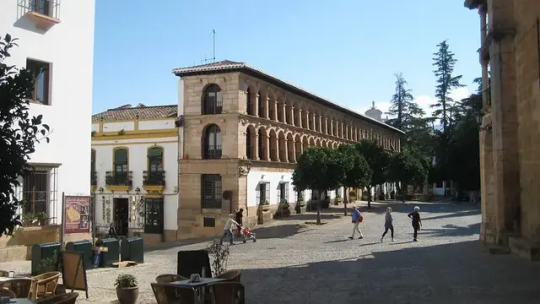
photo credit: Domenico T
It is impossible to pass by the Plaza Duquesa de Parcent without stopping by when visiting Ronda. You are bound to fall in love with its unique charm and its fabulous monuments, including the town hall and the church of Santa Maria la Mayor. The latter building, of Gothic and Renaissance style, took more than 200 years to be built and is a must-see when you come here.
Mondragon Palace
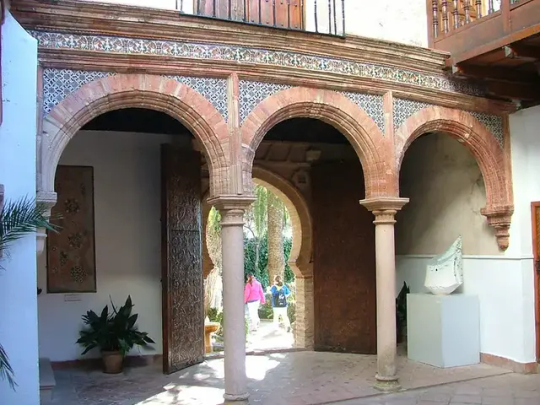
photo credit: Alan Cordova
A former royal residence built in the fourteenth century, the Mondragon Palace is a marvelous monument of Renaissance and Moorish style. Inside, you will find a museum with exhibits that trace the history of the town of Ronda. Afterward, stroll through the gardens of Mondragon, and enjoy the privileged view of the old city.
Ronda bullring

photo credit: bestCityscape
Emblematic of the city's bullfighting culture, the Ronda bullring was built in 1785 and is one of the oldest bullrings in Spain. With a total capacity of 5,000 spectators, these stands are now open to visitors who can visit the central sandy ring and the bullring's historical firearms museum.
The must-sees in Benalmadena
Benalmadena, the last town in our selection, has everything you could wish for when you go on vacation to the Costa del Sol. No doubt that its paradisiacal beaches, its fascinating cultural visits, and the comfort of its tourist infrastructures will make you fall under its charm!
Benalmadena cable car

photo credit: Steeedm
To climb the 780-meter-high Calamorro mountain, the cable car of Benalmadena is certainly the most comfortable and practical solution. During the 15-minute ride, you will enjoy an incredible view of the city and the sparkling blue of the Mediterranean under the sun. On a clear, sunny day, you can even see the Moroccan coast!
Once you have reached the highest point, go to the Valley of the Eagles to watch the birds of prey shows. An activity that will surely delight young and old!
Colomares Castle

photo credit: RPM
It is one of the most refined monuments in the city of Benalmadena. Built in 1987, in honor of the famous navigator Christopher Columbus, the Colomares Castle has an unusual architectural structure and elements of Byzantine, Gothic, neo-Mudejar, and Renaissance styles. A monument like no other!
Bil-Bil Castle

photo credit: Paul Smeets
A surprising red residence in the middle of palm trees... No doubt about it, you are in the Bil-Bil castle. Built at the end of the 1920s for a French bourgeois family, it now serves as a municipal cultural center and wedding reception venue. Once inside, you'll be amazed!
Benalmadena Pueblo
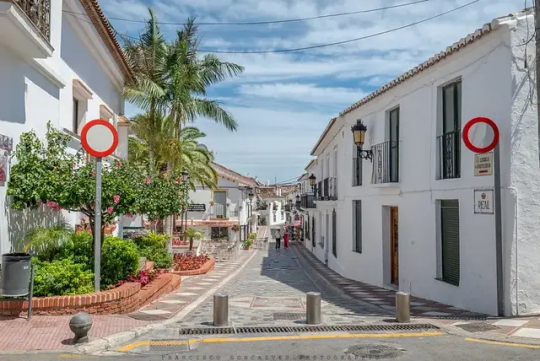
photo credit: Francisco Goncalves
An enchanted interlude a few kilometers from downtown, Benalmadena Pueblo reveals to curious visitors the more picturesque face of this large seaside resort. We like to lose ourselves in its charming and poetic streets and contemplate the traditional houses with their whitewashed walls. A perfect place to take unforgettable pictures of your vacation!
If you pass by the Plaza de Espana, you will probably notice this statue of a little girl holding a shell in her hands. It is the Nina de Benalmadena, a bronze sculpture symbolizing the friendly and benevolent look that the locals have towards the tourists. Here, conviviality is the rule, and you will be welcomed as if you were at home!
Mariposario Butterfly Park

photo credit: Mariposario de Benalmadena
To conclude your stay with unusual activity, take a detour to the Mariposario Butterfly Park in Benalmadena. This large tropical aviary of 900 m2, located right next to a Buddhist temple, is home to more than 1,500 butterflies of 150 different varieties from around the world. In Europe, you will not find such a concentration of lepidopterans: it is a unique terrarium by its size, a must-visit!
Practical information for a dream stay on the Costa del Sol
How to get around the Costa del Sol?Once there, you will have the choice between the car and public transport. If you are traveling alone and light, you should take the bus because it will be cheaper than renting a car.
If you are coming with your family, then it is better to rent a car. You will have a lot of freedom in your travels, and the prices will be proportionally lower than those of public transport if you are numerous (about 6 € per day).
Read the full article
0 notes
Text
Europe 2022 - Spain & Portugal (day 13-15) Peñíscola & Barcelona
We left Valencia and headed along the coast to Peñíscola (🤭) for some mediterrean sea views. The town and castle of Peníscola played the role of Valencia in the movie El Cid, and is now a popular tourist attraction and popular family holiday resort. After hiking around the cliffs and castle, we walked along the beach before getting back on the bus. We then continuer along the Costa Dorada to the Cava Bodegas at Sant Sadurni d'Anoia, where we enjoyed a tasting as we learned the sparkling secrets of Spanish bubbly. After trying a few samples (I had fresh grape juice instead), we got back on the bus and headed into Barcelona. Our first stop was Gaudi’s Park Güell. Originally started as a housing project, Gaudi was asked to create gardens around the houses. Unfortunately, being too far from the city centre only two houses were ever built and sold, so the gardens became a park. Gaudi uses creative liberty and an imaginative, ornamental creation in organic shapes resembling nature (no geometrical shapes). It was very odd. We then stopped by Olympic Port for supper. I had Galacian Octupus and a Passion Fruit Pina Colada. Apparently this marina has become an upscale neighbourhood since the 1992 Olympics, as my meal was over €40.
The next day we headed up the mountain of Montserrat to the Abbey of the Order of Saint Benedict. It is notable for enshrining the image of the Virgin of Montserrat (Black Madonna). The monastery was founded in the 11th century and still functions to this day, with over 70 monks. Monserrat literally translates to serrated, as the mountain looks like it has been carved with a saw into various formations. After checked out the views and the abbey, we headed back to Barcelona for a panoramic bus tour around the city, finishing at the famous Sagrada Familia (Basilica of the Holy Family). Construction began in 1882, however its first mass was not held in it until 2010 (128 years). Now 12 years later (140), many aspects are still incomplete and scaffolding still dominates the unfinished towers. Gaudí's original design calls for a total of eighteen spires, representing in ascending order of height the Twelve Apostles, the Virgin Mary, the four Evangelists and, tallest of all, Jesus Christ (only 9 are completed). There are to be three grand facades: the Nativity façade to the East, the Passion façade to the West, and the Glory façade to the South (yet to be completed). The Nativity Façade was started by Gaudi before his death in 1926, and completed in 1935. Dedicated to the birth of Jesus, it is decorated with scenes reminiscent of elements of life. Characteristic of Gaudí's naturalistic style, the sculptures are ornately arranged and decorated with scenes and images from nature. The Passion Facade, was created by by Josep Subirachs, who used rigid, angular forms to provoke a dramatic effect to show the severity and brutality of Christ's sacrifice. Inside the church, there are massive columns and kalaiscopic glass wIndows that shine in colors representing nature. It was beautiful, but a little odd.
After our tour, we headed for our final group supper. I had Andalusian-style calamari with Raz al Hanout mayonnaise, Entrecôte (steak) with fries, and Tim Baon – Ice cream nougat with Catalan cream & hot chocolate. Yumm!
The next day most of my travelmates flew home, but I still had one last day. I decided to do a hop & off bus tour to see any of the sights that I might have missed the last couple days. It was hot day, so I only managed two routes and 2 stops. I did get off at the cable car up to the top of Montjuïc to see the castle.
Final hours in Spain before flying home tomorrow!





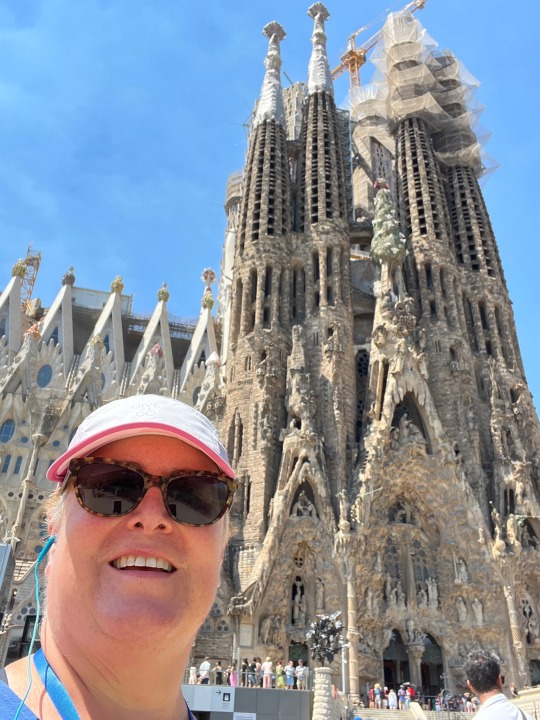
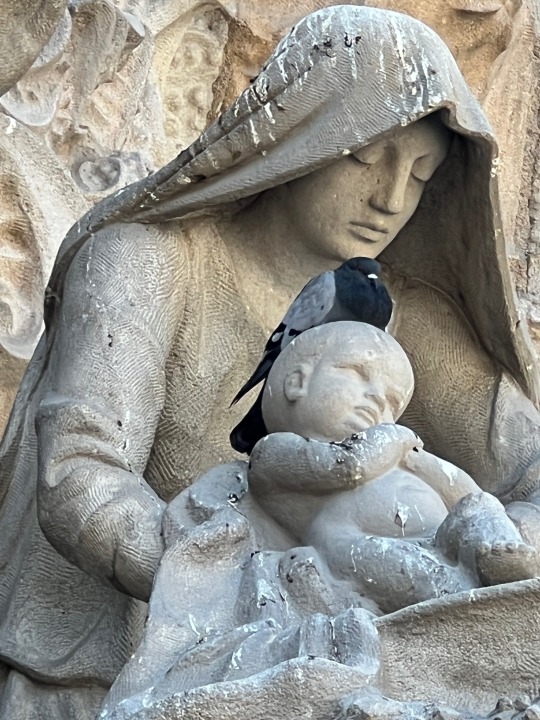



0 notes
Text
3 June 2002 - the horse show in Jerez and climb up to Carmona
Good morning! Buenos Dias!
There is unfortunately not much that I remembered between the 3rd and 5th of June 2002, so today's story may cover all three days.
On Monday the 3rd June 2002, my father had an appointment about 10 AM at the NAVSTA base. We had to pick him up about 3 PM at the southeast entrance of the US Navy base NAVSTA, at Cintura de Fuentebravia and Calle de la Guayaba. That was the entrance that I even remember back in 1977, walking right out of the base - not knowing any better at age 5, and of course my parents being very consternated, but security there has tightened so much since then.
That morning we woke up at 7 AM, had breakfast and we took my father to the NAVSTA base checkpoint at the east side, just off A-491. At the checkpoint, even though everyone had their passports, only my father was allowed in. We would pick him up from the same entry port about 3 PM.
I had some shopping to do at the Carrefour which was located at Centro Comercial El Paseo. I bought some extra rolls of 35 mm film and batteries for my camera. I cannot remember what else I would have bought there.
Unfortunately that particular evening I cannot remember where we ate supper, I think it may have been in Rota, just southwest of NAVSTA.
Tuesday the 4th June 2002 we woke up, had breakfast and checked out of the hotel. We had tickets to the 11 AM performance at the Royal Andalusian School of Equestrian Art. It is next door to the Bodegas Sandeman sherry production. The Equestrian art is basically a show of synchronizing up to ten equestrians in a row and marching in an orderly pattern. Sometimes the horses will use only their hind legs upon direction of the human, and it's kind of a contest to see how long the horse will walk only on their hind legs. The human riders wear pointy black hats, grey blazers with big black buttons, and black trousers. In attendance I think there were about five hundred people. And maybe 100 liters of Sandeman sherry sold that day, if not more.
We stopped by the Bodegas Sandeman before returning to the car, and I drove along the Duque de Abrames to the A4 and went northbound, past the airport "XRY", where the A4 joined the AP-4 toll road. I drove along the AP-4, stopping once to use the "aseos" and another time to pay the 5 Euro toll at Las Cabezas de San Juan. I drove about 120 km/h on the AP-4 until Dos Hermanas, and then I had to take the A-398 to Carmona, where we would spend the night at our last Parador hotel with half-pension. Carmona is similar to Arcos de la Frontera. Its city center is on a hill, and those who have never been there before will have some difficulty driving uphill. I drove to the Parador at Puerta de Marchena. From there, that was the last time I had driven in Europe until April 2005.
We checked into the Parador, put our luggage in the rooms and then we walked into town for some sightseeing. Supper would not be ready until past 8 PM. We saw the Alcázar de la Puerta de Sevilla, Ermita de San Antón, and Plaza Blas Infante. Some of the buildings along the way looked like the white paint had faded and the grey was poking out. Going back to the hotel, the view towards Puente Romano and farther east, was very nice. It had rained earlier that day but it stopped.
By the time 8 PM came around, we went back to the hotel to have supper. We had the fixed-price menu as part of our half-pension rate. Of course this included a bowl of gazpacho and diced vegetables. And I could not say no to the iberian ham, steak or tocino de cielo. We went to bed around 10 PM. We would have to catch a plane about 11 AM for Madrid T3 and bring the car back to the airport.
I hope you will join me for tomorrow's adventure. Please bear in mind that there are a maximum of three stories left and I will turn 30 years old on Friday the 6th June 2002.
Hasta manana y buenas noches!
#Royal Andalusian School of Equestrian Art#Jerez de la Frontera#Bodegas Sandeman#AP-4#sherry#aseos#Dos Hermanas#olga carmona#Parador#Puerta de Marchena#Ermita de San Anton#Plaza Blas Infante#Sevilla#tocino de cielo
0 notes
Text
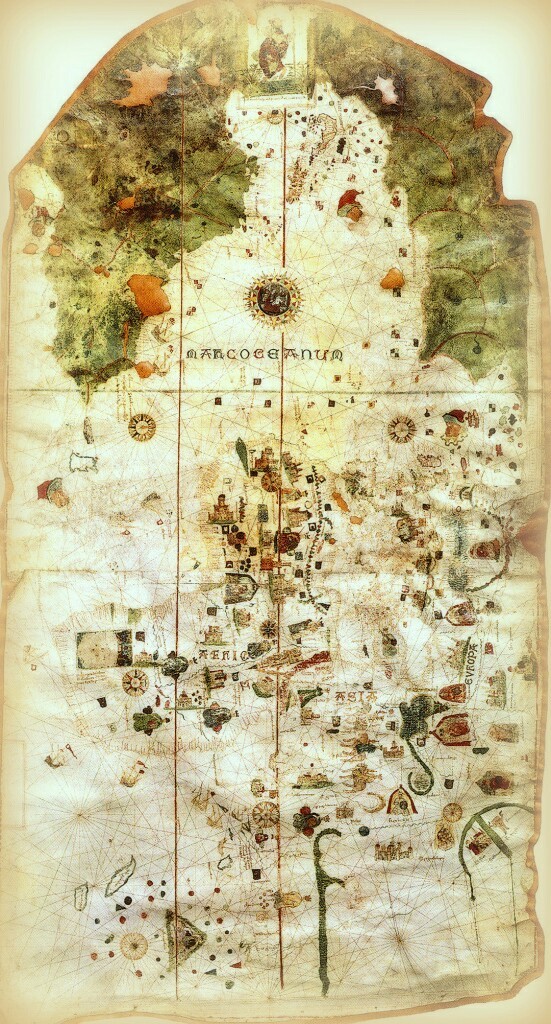
The unique piece that many museums would like to possess, perhaps the most important: the Juan de la Cosa map, designed in 1500 by the Spanish navigator. In it the lands explorer by Columbus in 1492 are represented for the first time.
Naval Museum of Madrid.
12 notes
·
View notes
Photo

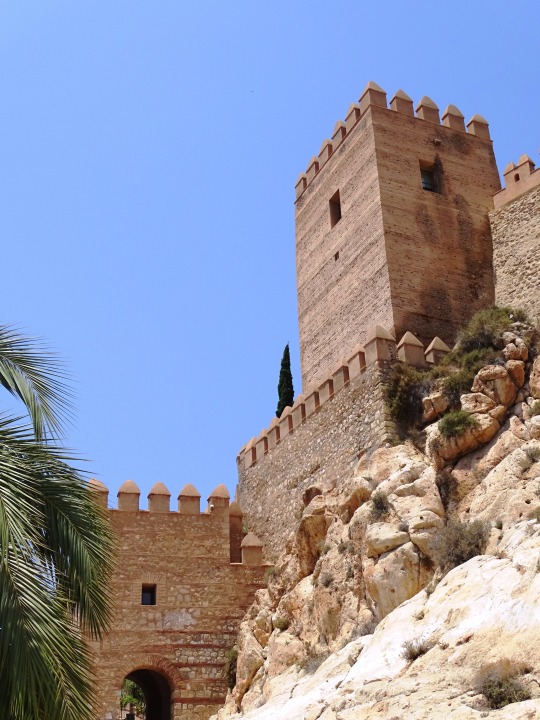

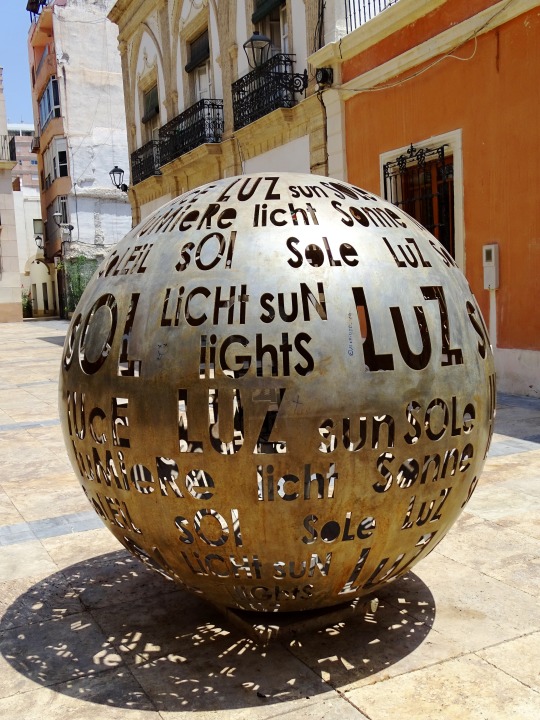
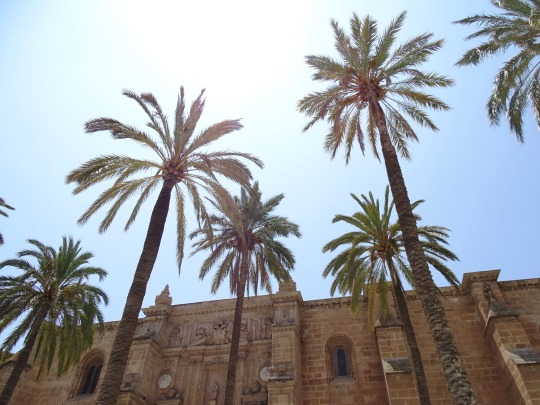

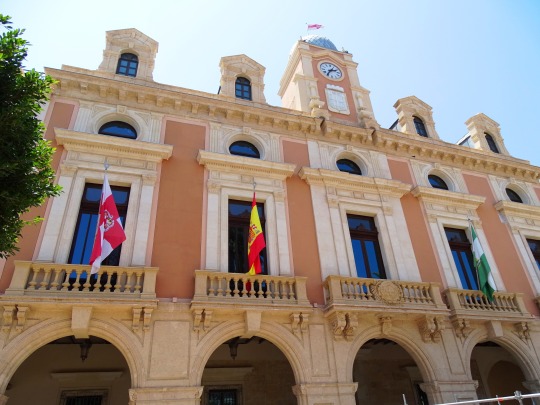



Almería, Spain (No. 13)
The origin of Almería is connected to the 9th-century establishment of the so-called Republic of Pechina (Bayyana) some kilometres to the north, which was for a time autonomous from the Cordobese central authority: the settlement of current-day Almería initially developed as a humble trading port of Pechina known as Al-Mariyya Bayyana. Pechina and its maritime port experienced divergent fortunes, and while the former progressively depopulated, the latter became the base of the Caliphal navy after 933, during the rule of Abd-ar-Rahman III. Furthermore, in 955, Abd-ar-Rahman III decided to erect the walls. A silk industry consisting of hundreds of looms and feeding itself from the mulberry trees planted in region, fostered Almería's economy. Almería also became an important slave trade hub during the caliphal period.
[...]
During the Spanish Civil War the city was shelled by the German Navy, with news reaching the London and Parisian press about the "criminal bombardment of Almería by German planes". Almería surrendered in 1939, being the last Andalusian main city to fall to Francoist forces.
In the second half of the 20th century, Almería witnessed spectacular economic growth due to tourism and intensive agriculture, with crops grown year-round in massive invernaderos – plastic-covered "greenhouses" – for intensive vegetable production.
After Franco's death and popular approval of the new Spanish Constitution, the people of southern Spain were called on to approve an autonomous status for Andalusia region in a referendum. The referendum were approved with 118,186 votes for and 11,092 votes against in Almería province, which represented 42% of all registered voters.
Source: Wikipedia
#Almería#Andalusia#Alcazaba of Almería#architecture#cityscape#Spain#travel#summer 2021#original photography#tourist attraction#landmark#Luz y Sol by Ferrer Arquitectos#public art#sculpture#España#vacation#Almería Cathedral#Plaza de la Constitución#Plaza Vieja#Town Hall#alley#Southern Europe#Southern Spain#Plaza de la Catedral#palm tree
4 notes
·
View notes
Text
Mediterranean Medley: The Jewish Community of Tunisia
Tunisia is currently making global headlines. A decade ago the Tunisian protest for democracy sparked the “Arab Spring”, which led to vast political shifts in the Middle East. Now, its citizens are fighting to retain their past achievements and curb the ruler's authoritarian pursuits.
The recent events in this small country on the southern shore of the Mediterranean also provide an opportunity to discuss its Jewish community, a community small in numbers yet incredibly diverse in terms of socio-economic status and cultural orientation. This entry is therefore dedicated to exploring the complex history of the community, including the particularly tragic chapter of the Nazi occupation during the Second World War. As always fiction and culinary elements will be weaved into the discussion.
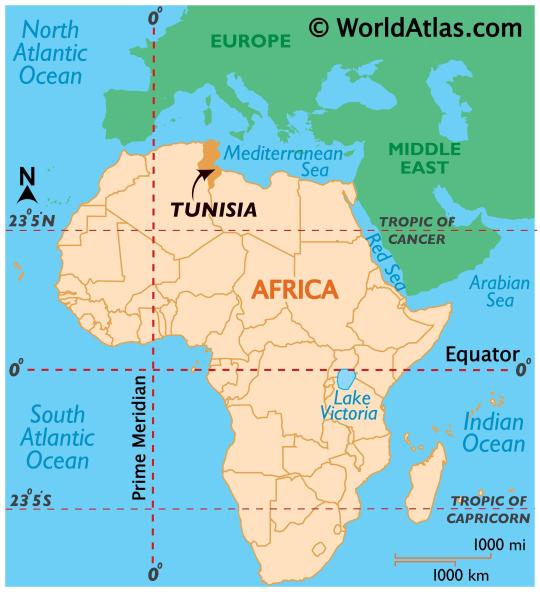
(Tunisia on the map: between Africa and Europe)
Berber, Italian and French Mix
The Jewish community of Tunisia settled mostly in the coastal areas in the cities of Tunis, Sousse, Sfax, Bizerte and Monastir. There were also several rural Berber communities, in which Jews lived a semi-nomadic life.

(The beautiful coast)
The origin of the Jewish community is disputable. Members of the community claim the first settlers migrated from Jerusalem after the destruction of the second temple in 70 CE. Several scholars, however, ascertain that the community originated from the conversion of either Phoenicians or Berber tribes.
Origin aside, archeologists indicate a viable Jewish presence beginning in the fourth century CE. Evidence also shows connection between Tunisian Jews and Jewries in Persia, Israel and Iraq. The Bagdadi community and its Talmudic centers, in particular, was a source of inspiration fueling the local Torah learning, and overall intellectual life.
In the fifteenth century, Andalusian Jews found refuge in Tunisia while escaping the Spanish Inquisition. Their influence is notable in architecture, culture, and clearly cuisine. Another wave of Jewish immigrants arrived to Tunisia from the Italian port city Livorno during the sixteenth and seventeenth centuries. The Livornese Jews, mostly Portuguse Marrano descendants, built maritime trade between North African hubs to European Mediterranean port cities. In 1741, the Livornese community (also called “Grana”) asked for autonomy on the pretext of having a different liturgy. Followed by this act, two separate communities- native and Livornese- were formed. The two sub-communities had their own rabbis, synagogues, cemeteries and philanthropies. The Livornese section, which actually encompassed all European Jews whether they came from Italy, France, Gibraltar or Malta- prided themselves as superior. They refrained from intermarrige with the native Jews, refused to speak Judeo-Spanish and continued speaking Italian. Some of the Livornese became rich bankers and merchants, but many were weavers, tailors, shoemakers, and even lived in poverty relying on charities.
In the cities, since Medieval times, the indegenous Tunisian Jews, lived in the margins of the Muslim areas and the Souks, in quaters named Haras. The Haras became overpopulated starting in the second half of the nineteenth century with poor sanitary conditions, and no running water nor electricity. The residents of the Hara were mostly craftsmen- tailors, potters, leatherworkers and silversmiths. Those who could afford it, left the Hara to settle in the European quarters built by the French.
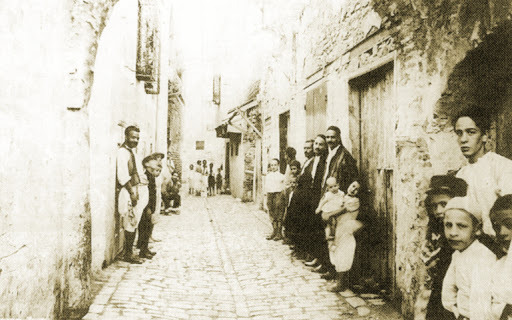
(The Hara of Tunis, image #1)

(The Hara of Tunis, image #2)
The French Colonization, starting in the late nineteenth century, created a new elite of Francophones. The upper Jewish class eagerly fostered French as their mother tongue, named their children in French names and sent their children to schools in Paris. The few, who managed to obtain key posts in the new colonial governments, were granted French citizenship, but the majority including some of the wealthiest families remained with the status of subjects.

(The French Quarter of Tunis)
Despite the strong French influence, Tunisia continued to be fairly diverse as a port country luring people from different parts of the Mediterranean basin. Thus, the Jewish population (unlike their brothers in neighboring Algeria) lived in a multicultural environment, in which Greeks, Maltese, Italians and of course Arabs co-existed and influenced one another.
A Boy in a Ruthless City: The Nazi Occupation through the Eyes of an Adolecent
The cosmopolitan climate described above was the setting of Albert Memmi’s (1920-2020) semi-autobiographical novel, The Pillar of Salt. In the book, Memmi, a distinguished philosopher known for his work on Colonial Studies, disguised himself as Alexandre Mordekhai Bennillouche, a poor Jewish boy growing up in the Hara of the capital, Tunis.
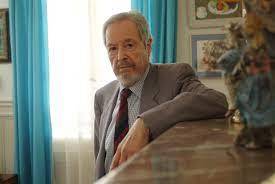
( Albert Memmi)
Bennillouche (or Memmi) begins his account in describing his happy childhood as an age of innocence and unawareness to his poverty and inferior status as a “native Jew”. Gradually, the protagonist discovers the world around him. He excels at school, but suffers from anti-Jewish violence from Chirsitan and Muslim peers. Given his academic performance, he is given a stipend to study in one of the city’s top schools, where he is introduced to the upper circles of the Jewish community and the general European society. This exposure causes a rift in the relationship with his parents, who resent his education wishing for him to continue the family leather business. Although deeply ashamed of his parents - their meager existence and traditional views- Bennillouche is quickly disillusioned from the enchantment of the elite. Being a critical thinker, he spots its insincerity and snobbery, yet he is forced to hide his contempt as he is dependent on their funds for his schooling.

(The capital- Tunis)
The six month Nazi occupation of Tunisia (November 1942- May 1943) reaffirms Bennillouche’s beliefs about the hypocrisy of the elite. During the short- yet traumatic - German presence, Tunisian Jews were subject to constant harassment from the occupiers and general population, and were under the imminent threat of being deported to the death camps in Europe. Yet, the degree of Jewish misery varied based on socio-economic belonging. When the Germans issued a decree for Jewish forced labor, the wealthy ones of the community paid ransom to exempt themselves and their dear ones. Impoverished men- however- were destined to greater hardship.

(Jews assigned for forced labor)
Benillouche (and Memmi himself) was one of the unfortunate people. Despite being friendly with people in high places, and holding a prestigious teaching position, he was deported to a concentration camp in the Saharan desert. There, he suffered from the brutality of the guards, the senseless work, and above all the merciless sun. However, camp was also a place of revelation. The hardship created a sense of comradery between Benillouche and his fellow inmates, of whom he shared similar upbringing. He was even reunited with some old friends, and enjoyed conversing with them in his childhood dialect of Judeo- Arabic, which he neglected in favor of French. In addition, the camp helped him to rediscover and reconnect to his Jewish roots, as he was asked to lead Shabbat prayers as the camp’s intellectual figure.
By the time the camp was released by the Allies, Bennilouche was a more grounded man. He still continued to march according to his original trajectory in the academic world but with a wiser outlook on life.
Topped with Harissa: A Quick Peek to Jewish-Tunisian Cuisine
Even while estranged from his family traditions, Bennilouche always maintained a fondness for his mom’s traditional Tunisian cooking. In fact, he recounts nostalgically the smells of Shabbat dishes cooking slowly in the tiny kitchen of his childhood home. When he matures, he recognizes the power of food as a source of comfort and festivity in a household that is poor and filthy. One of the dishes he highlights is Bkeila (also pronounced Pkeila) - a hearty spinach and beans stew served vegetarian or with beef. Below is Yotam Ottolenghi’s take on it from his latest cookbook Flavor.
Bkeila, Potato and Butter bean Stew - Adapted from Flavor
(See my notes below to simplify the cooking process)
4 cups (80 gram), roughly chopped cilantro
1 ½ cups (30 gram) parsley
14 cups (600 gram) spinach
½ cup (120 ml) olive oil
1 onion (150 gram), finely chopped
5 garlic cloves, crushed
2 green chiles, finely chopped and seeded
1 tbsp plus 1 tsp ground cumin
1 tbsp ground coriander
¾ tsp ground cinnamon
1 ½ tsp superfine sugar
2 lemons: juice to get 2 tbsp and cut the remainder into wedges
1 qt/ 1L vegetable/ chicken stock
Table salt
1 Ib 2 oz/ 500 gram waxy potatoes, peeled and cut into 1 ¼ inch pieces
1 Ib 9 oz/ 700 gram jar or can of butter beans, drained
1.In batches, put cilantro, parsley and spinach in a food processor until finely chopped. Set aside.


(Massive amounts of greens)
2.Put 5 tbsp of olive oil into a large heavy-bottomed pot on medium heat. Add the onion and fry until soft and golden, mixing occasionally (about 8 minutes). Add garlic, chillies and all the spices and cook for another 6 minutes, stirring often.
3.Increase the heat to high and add the chopped herbs and spinach to the pot along with the remaining 3 tbsp olive oil. Cook for 10 minutes, stirring occasionally until the spinach turns a dark green. The spinach should turn a little fried brown but not burn. Stir in the sugar, lemon juice, stalk and 2 tsp salt. Scrape the bottom of the pot if needed. Bring to a simmer, then decrease heat to medium and add the potatoes. Cook until they are soft for about 20-25 minutes and then add the butter beans and cook 5 minutes longer.*
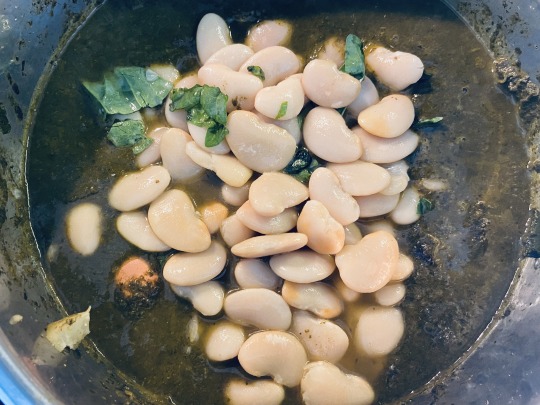
(Butter beans to break the deep green)
4.Divide into bowls and serve with lemon wedges.**
* As this dish was traditionally slow cooked using a slow cooker pot or a pressure cooker could easily do the trick. If using these- do the following: Skip step 1. Saute the onions, garlic, chilli and species as instructed in step 2. Then add the rinsed spinach and herbs. Mix them well with the onions and spices in the bottom. Once the spinach begins to melt, mash them using a hand blender and then add the ingredients described in step 3 (beside the butter beans). Then let it slowly cook until everything softens. In the end, add the butter beans and press on the “stay warm” button.

(loading the pot with spinach)
** I served it with bulgur to soak up the liquids a bit (rice, farro or any other grain will work as well). I also added hard boiled eggs for additional protein.

(Healthy and heart)
In addition to the Bkeila- The Tunisian Shabbat table will not be complete without the famous couscous. The process of making it from scratch without a food processor was quite laborious, but the result - whether served sweet with nuts and spices, or savory with meat stew or fish - was considered a delicacy.
The proximity to the Mediterranean shore brought fish dishes to the Jewish- Tunisian repertoire. Fish is mostly eaten fried or cooked as fish balls or oven roasted served with red hot sauce. Meat is also often served spicy, and often chunks of hot merguez sausage are added to stews or shakshuka.
Generally speaking, Tunisian Jews are fond of hot flavors, and their cuisine is potentially the spiciest in the diaspora (perhaps only second to the Yemeni). Harissa paste, now increasingly popular around the world - is liberally used to spice up any dish. This fiery red pepper condiment is added - for example- to the famous Tunisian fricassee, one of Israel's most popular street foods. Click here for a recipe for this tuna loaded sandwich, and here to learn more broadly about Tunisian cuisine.

(Tunisian Sandwich with some Harissa)
8 notes
·
View notes
Text
Exspaining Spain: regions
Ceuta (Ceuta)

Ceuta is an autonomous city in the north of Africa.

Architecture
The traditional architecture of the region has Andalusian and Moroccan influences.

Climate
The predominant climate type is the Mediterranean one, characterized by hot summers and mild winters. Winter and fall are the rainiest seasons. The average temperature throughout the year is 18.8 °C (65.8 ºF).
Economy
The port is the center of all economic activity, as it is used for oil, fishing, and exports.

Other economic cornerstones are its industrial and retail centers.
Famous people
Alicia Sanz - actress
Anuar Tuhami - soccer player
Eva Isanta - actress
José Martínez Sánchez - soccer player
José Miguel Giner - poet
Lorena Miranda - waterpolo player
Miguel Bernardo Bianquetti - soccer player
Mohamed Lahchiri - journalist and writer
Pedro Avilés - novelist
Gastronomy
The diet of Ceuta is based on fish, seafood, vegetables, and meat. Typical dishes include corazones de pollo (chicken hearts), pinchos morunos (an adaptation of kebab), tayín (meat and vegetables stew), harira (soup with meat, tomatoes, and legumes), and pastela (a kind of puff pastry made with dough stuffed with onions, pigeon meat or chicken, parsley, and almonds).

Tayín
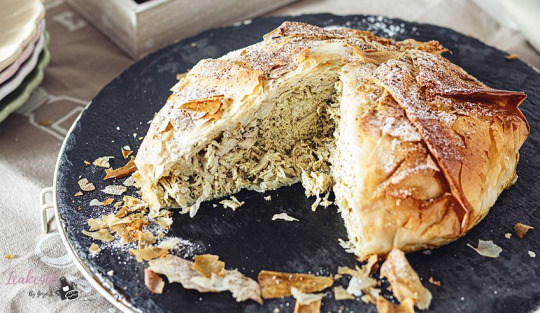
Pastela
History
1st millennium BCE - Phoenicians, Carthaginians
1st century BCE - Roman conquest
1st century CE - Vandals
7th century - Visigoths
8th century - Imazighen
1415 - Portuguese conquest
1668 - transfer to Spain by Portugal
1694-1727 - siege by Moroccan forces
1925 - Ceuta became independent of Andalusia
Languages
The only official language is Spanish, but Darija Arabic is spoken by 40% of the population, and Haketia is spoken by a minority of the population. Darija Arabic, also known as Moroccan Arabic, is part of the Maghrebi Arabic dialect continuum. It has been heavily influenced by Amazigh languages. Haketia is a Jewish Romance language spoken by North African Sephardi Jews. The variety of Spanish spoken in Ceuta is the Andalusian one.
Monuments and landmarks
There are no UNESCO World Heritage Sites in Ceuta. Landmarks include Mount Hacho, the Royal Walls, the House of Dragons, and the Shrine of Our Lady of Africa.

Royal Walls

House of Dragons
82 notes
·
View notes
Text



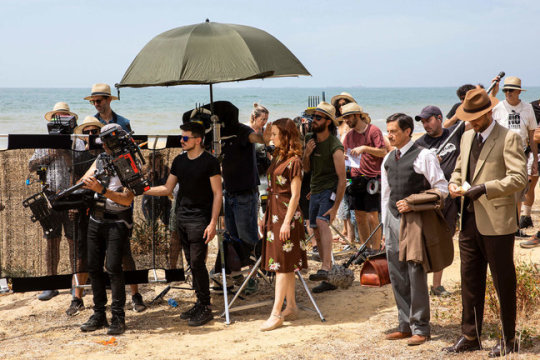
New upcoming period drama: Operación Barrio Inglés
Co-produced by RTVE with Onza (El Ministerio del Tiempo, Parot, Hernán) and the Andalusian production company Emociona Media, filming begins for Operación Barrio Inglés, a new intrigue drama for the TV channel La 1.
Spies, Nazis, British and a risky love story set in Huelva in 1940, a city where the conflicts of World War II are reproduced on a smaller scale.
Synopsis
World War II has just broken out.
Although Spain is "neutral" under Franco's dictatorship, Huelva is a strategic enclave to control the ships of both sides that cross the strait. In addition, it has an important British colony. For this reason, the Germans send members of the Secret Service to control what happens in the city, especially in the mines in the province of Huelva, owned by the English, and which provide Great Britain with ore for weapons and artillery.
In this way, Huelva becomes a veritable nest of spies from both sides, among whom the young Lucía is forced to move. She has just turned 25 and has been hired by an English mining company to work in their offices as a secretary.
There she meets the company's manager, Peter, an attractive Englishman with a dark past who drags Lucía into an adventure in which she will be forced to take sides. When you're in the middle of a war, being neutral is not an option.
Data Sheet
Executive Producer: Gonzalo Crespo Gil, José María Irisarri, Pilar Crespo, Gonzalo Sagardía, Clara Almagro, Santiago de la Rica
RTVE executive production: Borja Gálvez
Production Director: Onil Ganguly Directed by: Chiqui Carabante José Ramón Ayerra
Plot direction: Manuel Ríos San Martín Screenwriters: Manuel Ríos San Martín, Victoria Dal Vera, José Ortuño, Virginia Yagüe, Pablo Tobías and Tatiana Rodríguez
Photo Direction: Dani Salo (A.E.C.) and Alejandro Espadero (A.E.C.)
Art Direction: Hector Bertrand
Casting Direction: Juana Martínez
Music: Pablo Cervantes
Wardrobe: Matías Martini
Makeup and hairdressing: Anabel Beato
Cast
The series will star Aria Bedmar (Lucía), Peter Vives (Peter) and Rubén Cortada (Francisco).
The cast is completed by Paco Tous (José), Juan Gea (Enrique), Bea Arjona (Amparo), María Morales (Cinta), Chiqui Fernández (Rocío), Kimberley Tell (Agatha), Aida Ballmann (Miss Eva), Silvia Hanneman (Hanna), Yan Tual (Victor), Sue Flack (Miss Parker), Marco Cáceres (Juan), Almagro San Miguel (Toni), Carla Nieto (Sylvia), Ángela Chica (Belén), Clara Navarro (Rebeca), Fran Cantos (Oskar), Stefan Weinert (Schneider), Kevin Brand (Kurt), Frank Feys (Edward), Craig Stevenson (Goodwill), Edu Rejón (Gianni), Gregor Acuña (Dieter), José Luis Rasero (Civil Guard Captain), Gonzalo Trujillo (German Consul), Ken Appledorn (English ambassador) and Carlos Olalla (Father Damián), among others.
Filming
Operation Barrio Inglés will have as its settings the old dock of the English mining company and the area of Tinto River and its open-pit mines, as well as the Bellavista neighborhood in the town of Minas de Riotinto, the port of Punta Umbría and the Mazagón beach in Huelva. In Sevilla, among other locations, it will be shot at the Monsalves Palace, and in other areas of the city and province, and also in different parts of Jerez de la Frontera.
About the mines and their location:

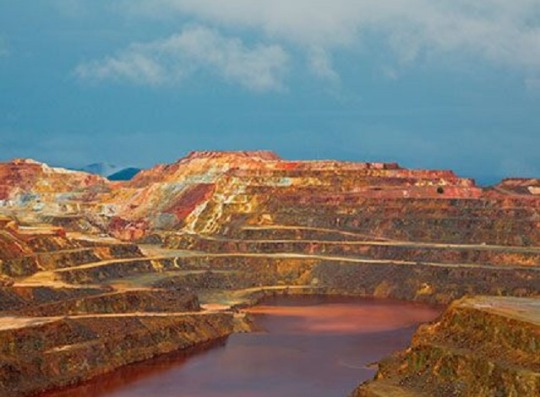

This is the Tinto river, its waters are red due to the high concentration of sulfur and iron oxides in the land (it happens the same with the red lagoon of Mazarrón's mines, Murcia), although it's duscussed if the mining activity has been increasing this characteristic, its water are very acid and are poluted with heavy metals.
The Tinto river (ancient name: Luxia) starts its flow in the Aracena Mountain Range and after 100 km joins the Odiel river (ancient name: Urium) at the height of the city of Huelva.
The mines have been exploited since pre-roman era, by Iberians and Tartessians, to obtein iron, copper, magnesium, silver and gold, which improved trading with the Phoenician, Carthaginian, and Greek colonies that were near to this site (in fact, the city of Huelva was founded by Phoenicians, and it was called Onuba), and eventually the Carthaginians took control of the mines after their expansion throughthe Iberian peninsula. Later, it became one of the most important mining areas of the Roman Empire.
By end of the 19th century, due to económico crisis the Spanish government sold several mines to English Companies, and one of them was the Riotinto mines, who were bought by the Rio Tinto Company Limited (RTC) in 1873, as they were looking for metals that were very demanded in the country due to its high industrialization (in contrast, in Spain the industrialization was scarce and the two main regions in which it was developed were Catalonia and Basque Country)
The RTC was the builder and owner of the railway line that connected the mines with the port of Huelva, where it built a mineral dock to facilitate the unloading and transport of the extracted material by sea to England.
In Riotinto, the luxurious and exclusive neighborhood of Bellavista was built for English personnel, it was a Victorian-style neighborhood that was endowed with tennis courts, golf courses, its own cemetery, a Social Club or even a Presbyterian church.
Huelva capital will also develop under the English influence. The numerous workshops and facilities built by the RTC that gave work to more than seven hundred workers, such as the railway station, changed the appearance of the city and contrasted with the rise of a new bourgeoisie of both Spaniards and foreigners who found themselves linked to the company. The power of the company became such in the city that civil buildings depended on the interests of the company.
Proof of this are the Reina Victoria neighborhood, as a garden city that welcomed part of its employees; the construction of Casa Colón, which ended up becoming the headquarters for the company's offices; the disappeared English Hospital; or the gigantic mineral pier located on the Odiel River. The English population introduced football, being the Huelva Football Club the first football team in Spain, founded in 1889.
In Punta Umbría, the British managers of the Rio Tinto Company Limited (RTC) erected rest areas for their employees. Since 1883 some constructions were carried out in the area, in wood and of the bungalow type, but it would not be until 1896 when the RTC was granted the possibility of establishing houses in this area, to which many RTC employees and their families went in summer to the beach through the Riotinto railway.
In 1943, the corpse of Glyndwr Michael, a Welsh homeless, disguised as a British Marine oficer called William Martin with information about a fake plan of the Allies to attack Greece was found drowned near the coast of Huelva, in Punta Umbría. This was part of the Operation Mincemeat to distract the Nazis and attack Sicily instead. Operation Mincemeat was a important plot in episode 3×02, Tiempo de Espías, from El Ministerio del tiempo. Well, although in the episode the original Operation is cancelled and a character named William Martin later takes the place of the original "William Martin", so the Operation success.
Years later, in 1954 the Riotinto mines returned to national property, under the CEMRT (Compañía Española de Minas de Río Tinto)
#operación barrio inglés#aria bedmar#peter vives#rubén cortada#paco tous#juan gea#bea arjona#maría morales#chiqui fernández#kimberley tell#aida ballmann#silvia hanneman#yan tual#sue flack#marco cáceres#almagro san miguel#ángela chica#clara navarro#fran cantos#stefan weinert#kevin brand#frank feys#craig stevenson#period dramas#upcoming series#carla nieto#edu rejón#gregor acuña#jose luis rasero#gonzalo trujillo
4 notes
·
View notes
Photo


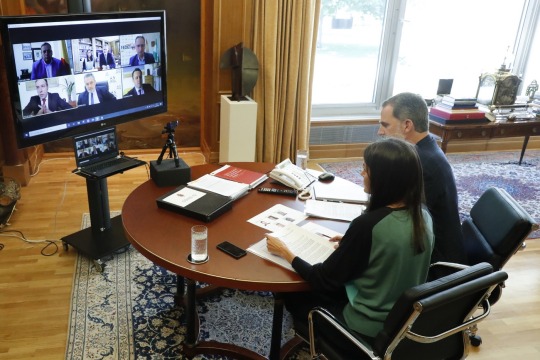

June 10, 2020: King Felipe and Queen Letizia held a videoconference with the Taxi sector
Don Felipe and Doña Letizia have maintained their preferential interest in recent weeks with those who have guaranteed essential services for citizens. And a primary sector, also during confinement, has been that of Transport, which has guaranteed the mobility of people and goods to supply the population. In successive conversations with representatives of ports, airports and rail, road and suburban transport, in contact with AENA, RENFE, the Association of Air Lines, EMT and the Madrid Metro and the Transport Business Committee. Today with the top managers of the taxi sector. FEDETAXI and ANTAXI account for one hundred percent of the licenses and taxi workers in Spain, both self-employed and salaried entrepreneurs.
The associative representatives have explained to the Kings that during the month of February the taxi drivers already began to notice the effects in a sensible way, when they received the news of the epidemic that came from Asia. During that month, congresses, fairs and meetings were canceled or postponed. At the beginning of March, the activity was halted at Renfe stations, ports, airports, transport interchanges and points of generation of habitual high demand for travelers.
There was a drastic drop in mobility according to data from the General Directorate of Traffic, recorded at the beginning of the state of alarm. In the accesses to cities, passenger traffic decreased 67%, and 61.29% for long-distance trips. The reduction in traffic in cities like Madrid was 71.3% and Barcelona produced similar figures. These figures increased until, at the height of the pandemic and the restriction of the fundamental right to mobility (the first days of April), it has reached practically 90%, gradually recovering up to 50% in which We found it in the last days of May.
The collapse of the urban circulation of taxis has been absolute. The sector itself estimates the request for services by applications or stations at only 10% compared to the usual until practically the last week of May, discounting those services that have been carried out free, voluntarily and in solidarity for health workers and other essential personnel.
Some cities have taken measures to reduce the supply of taxis such as, for example, Seville where only 25% of the fleet could work daily, Barcelona 20%, Madrid up to 50%, Calviá 20%, Jaén 25%, Puerto de Santa María 50%, Fuerteventura 20%, and thus hundreds of Spanish municipalities.
Consequently, the economic activity and the turnover of taxi drivers have been until the end of May around 10-20% of the normal figures. Activity has been less than 75% of normal, and is now going back to 20-40%, according to the Autonomous Communities.
During the health emergency, the Taxi has been providing services mainly for the elderly, hospitals, patients, nurses, doctors, often altruistically and disinterestedly. When there has been compensation from the Administration, it has been returned to compensate for the deficit in sanitary material. This performance has occurred throughout Spain.
The representatives of FEDETAXI and ANTAXI contemplate the current situation, which is still very complicated, and it will take a long time to reactivate the activity and return to relative normality. As for all clients, the service projections in the months that remain until the end of the year are not rosy, so that the red numbers in the sector would continue.
A reduction in traffic is expected in areas of demand such as airports, ports and train or bus stations, hotels, etc., due to a collapse of national and international tourism; the possible cancellation of all kinds of events such as festivals, concerts, popular parties, congresses, sports events; the fall of "the night"; or the promotion of telework.
In smaller or less tourist cities and in rural areas, where taxi revenues are much lower than large capitals, the direct and indirect costs of the activity will exceed the income or reduce the net return on the activity to levels insufficient for subsistence .
Although a transfer of passengers from public transportation to the taxi is also expected, with the number of potential taxi users growing - for fear of the spread of COVID19, it is not estimated that this represents an increase in turnover of more than 8-12%.
The taxi sector in Spain is made up of 63,494 taxi license holders, of whom 98.3% are self-employed, and around 35,000 salaried drivers, supporting 100,000 families throughout Spain.
Taxi drivers are grouped into two associations: FEDETAXI, which represents 61% of licenses; and ANTAXI, which represents 39% of the licenses.
FEDETAXI (Spanish Taxi Federation) was established in 2012 as a group of associations or organizations of taxi drivers from the different provinces or communities of Spain with the purpose of defending, promoting and promoting the interests of taxi drivers and the organizations or associations that form part of it.
It is made up of the Madrid Auto Taxi Association, the Castilian-Leon Taxi Federation, the Andalusian Federation of Autonomous Taxi Drivers, the Union of Autonomous Taxi Drivers of Catalonia, the Taxi Association of the Balearic Islands, the Taxi Free Self Employed Union with offices also in Valencia and Galicia, the Provincial Association of Taxi Drivers of Zaragoza, and the Confederation of Taxis on the Costa del Sol. Together they include more than 60 taxi drivers' associations.
In addition, FEDETAXI is part at the national level of the National Federation of Autonomous Workers (ATA) and within the European Union, of the Taxi Europe Alliance (TEA) where, among others, taxi drivers from Italy, Portugal, and in which FEDETAXI holds the presidency.
The current (acting) president of FEDETAXI is Miguel Ruano Bravo, first vice president of the entity, as long as the current electoral process of the federation ends.
ANTAXI (National Taxi Association) is an Organization that has the presence of Associations from the various Autonomous Communities, whose objectives are the fight against intrusion and unfair competition; ensure that the taxi is of universal, plural and quality access; defense of the taxi as a public service; and the development of regulations that protect the activity.
It has a presence in practically all the Autonomous Communities. The Associations that are part of ANTAXI are the Autonomous Confederation of Taxis of the Valencian Community, the Basque Taxi Federation, the Professional Taxi Federation of Madrid, the Independent Taxi Federation of the Balearic Islands, the Cantabrian Taxi Federation, the Independent Association of Taxi Drivers, Self Employers of Navarra, Agrupació Taxi Companys (Barcelona), Radio Taxi Aragón, Association of Taxi Drivers of La Rioja, Radio Taxi Mérida, Associació del Taxi Intermunicipal de Catalunya, Radio Taxi Murcia, Rural Taxi Associations of Seville and Córdoba.
The president is Julio Sanz. Borja Musons is the vice president and the president of the Basque Taxi Federation.
The taxi is a public service of general interest within the municipalities and, therefore, it is the municipalities that have the main powers over it and determine the maximum number of taxi licenses in each of the municipalities according to their volume of population or other objective parameters. It is appreciated how Madrid and Barcelona are the cities with the highest number of licenses, with 15,000 and 10,000 licenses, respectively.
Regarding the distribution of energy sources, for example, Madrid has 4,295 hybrid taxis (27.62%), 2,784 LPG-powered (17.89%) and 8,135 (52%) with a diesel engine, while pure electric ones (BEV) barely reach 20 vehicles. The Barcelona Municipal Area has 3,221 hybrid vehicles (30.71%), 797 LPG (7.60%) and 6,201 (59.12%) diesel. The average age of the fleet in the capitals is close to 6.4 years, with a 10-year limit for all taxi vehicles. FEDETAXI believes that the sector needs a strong impetus for the green transition and would be a great "test bed" for the electrification of urban mobility.
Taxi drivers' taxation is subject to the direct estimation regime (modules) of personal income tax and VAT. The average income of a taxi driver, before taxes, is not homogeneous, varying greatly between cities and Autonomous Communities, ranging from 16,000 to 36,000 euros. The dependence on tourism, events, leisure and hospitality activities exceeds, on average, one third of its turnover, even reaching double in tourist towns and large capitals.
The taxi sector has been dragging a strong crisis due to the emergence of the liberalized rental vehicle with driver (VTC) modality from 2009 to 2015, which has gone from 2,500 vehicles to almost 17,000 throughout Spain. The emergence of digital platforms has produced a high degree of disruption and competition from VTCs with taxi drivers. In recent years there has been a conflict that has taken to the streets and to the political and judicial sphere, and even to the European institutions, without having yet fully settled. This is the complex context - marked by the technological and digital revolution and the changes in user habits - that the COVID pandemic has impacted19.
Participants in the videoconference with the Kings:
• FEDETAXI representatives:
• Miguel Ruano Bravo, vice president FEDETAXI (acting president), president of the Andalusian federation of autonomous taxi drivers (FAAT) and active taxi driver in Córdoba.
• Ángel Julio Mejía Noguerales, president of the Madrid taxi union (AGATM), candidate for the presidency of FEDETAXI and active taxi driver in Madrid.
• Emilio Domínguez Del Valle. Lawyer and technical secretary of FEDETAXI and National Land Transport Advisor (MITMA) for the taxi sector.
• ANTAXI representatives:
• Julio Sanz, president of ANTAXI and active taxi driver in Madrid
• Borja Musons, Vice President of ANTAXI and President of the Basque Taxi Federation
#King Felipe#Queen Letizia#King Felipe of Spain#Queen Letizia of Spain#King Felipe VI#King Felipe VI of Spain#Official Event#COVID-19#June 2020
18 notes
·
View notes
Text
History of Tango
Back in 18th century, the streets were the favourite place for slaves, European immigrants, and lower-class people in Argentina for dancing. This dance is now popular as Tango. A man and a woman dance with erotic movements to a music also known as Tango. It is one of the most influential and famous dances of the modern world that has made its way in the category of ballroom dances.
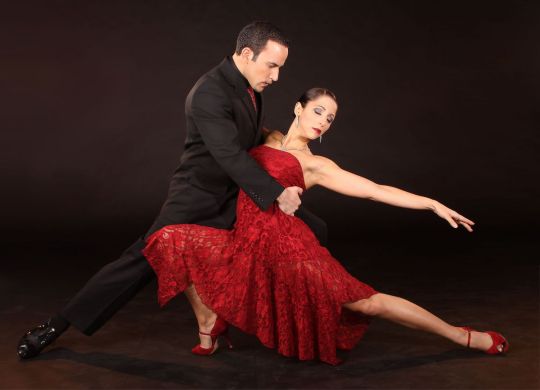
History of Tango
Tango has obscure origins and no legitimate history that can prove how it came into existence. It is known that tango was a term used for musical gathering of slaves in the River Plata region. The area had a high population of African and European immigrants. People used to gather along the ports of Buenos Aires, Argentina, Montevideo and Uruguay. The name for these gatherings began to be used synonymously with the dance and music style of those people. However, the earliest versions are not known to exist and the one in practice, The Argentine Tango, is the most popular type of the dance that managed to survive through the years.
There was a time when the government banned tango musical gatherings in 1789. From being called the music of the immigrants to becoming the most popular ballroom dance, Tango had to go through a lot. The massive influence of people from different cultures of Africa, Spain, Italy, and other native Argentinians and the rhythms and instruments they brought made up the tango as we know it today. The young immigrants who came to Argentina for a better life had a big role in popularizing the Tango initially. Their influence on the original tango was instrumental in capturing the attention of the wealthy classes who further popularized it in “coventillos” gathering. Later, these began to be performed in theatre houses by actors. This class of rich people of Argentina helped the tango to spread across other countries they travelled. That’s how tango became an overnight sensation in the Paris of the 1900s.
Early form of tango was performed in Cuba and Spain in the mid-19th century as solo dances by women. This was more like Andalusian tango that was a mixture of tango and flamenco. This form didn’t get enough popularity and was branded as immoral and flirty.
Tango would have never been born without the immigrants of the 18th and 19th centuries. What had started in a poor slum area as a medium of entertainment, had now developed into a dance of choice. When it reached in the core Argentinian cities, people from all classes became energised with a new musical and cultural style. Tango became more and more welcome. Dancers started to appreciate the traditional tango instruments that were not given too much importance earlier. Soon enough, tango became a craze, not only in Argentina but also in other European countries and North America. Since then, there have been variations to suit the local styles without altering the mood or the basic movements of the tango.
Buy dance costumes
5 notes
·
View notes
Text
Costa Del Sol: All Best Places You Must 100 % Visit
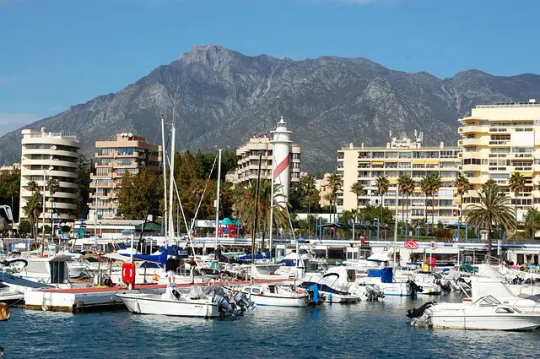

Among the leading tourist areas of the Mediterranean, it is difficult not to mention the famous Costa del Sol in Spain. Stretching over 150 km of coastline and bordered by iconic cities such as Marbella, Málaga, and Estepona, this Andalusian coastline attracts millions of holidaymakers every year in search of paradisiacal beaches, fascinating cultural visits, and, above all, sunshine all day long! Here are all the must-see places to visit on the Costa del Sol.
The must-sees in Marbella
A world-renowned destination, known for its festive atmosphere, dreamy beaches, and high-end services that delight the most demanding vacationers, Marbella attracts several million tourists from all over the world every year. But despite its reputation as a festive seaside resort, this chic destination has managed to preserve its authenticity with its typical narrow streets, lined with flowery whitewashed houses. Here are the must-sees in Marbella.
The old city of Marbella
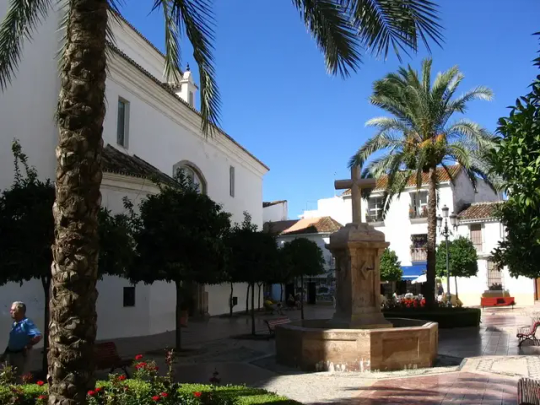
photo credit: Raiden 1
If you want to see the picturesque face of Marbella, the old town is the place to be! Stroll through the charming alleys with your camera in hand and capture every corner of this photogenic place: between the Orange Tree Square, the splendid Town Hall, the authentic traditional houses and the typical cafes, a huge palette of colors awaits you!
Alameda Park

photo credit: Pedro Munoz Sanchez
A true "green lung" of the city, Alameda Park is a large area of lush vegetation in the heart of Marbella. When the sun gets heavy during the hottest hours, between noon and 2 pm, it is a real oasis of tranquility with its shady areas particularly pleasant for picnics. Lose yourself in the park, stroll the marble walkways and enjoy the refreshing breeze from the magnificent Virgen del Rocio fountain.
The wild coast of the Dunes of Artola
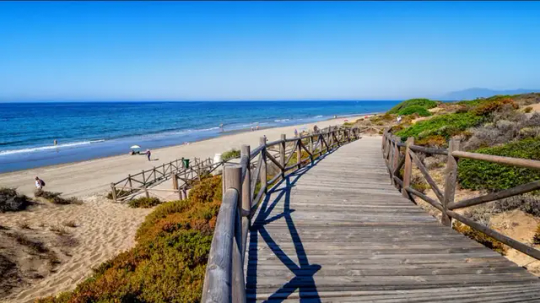
If you want to get away from the most touristy areas and isolate yourself in more solitary corners, head for the wild coast of the Dunes of Artola. Between land and sea, you will enjoy the invigorating sea air and the beauty of this preserved nature, dazzling at sunset.
On the beach of Cabopino, you will have the feeling of being alone in the world, and many consider it one of the most beautiful beaches in Andalusia.
Puerto Banus Marina
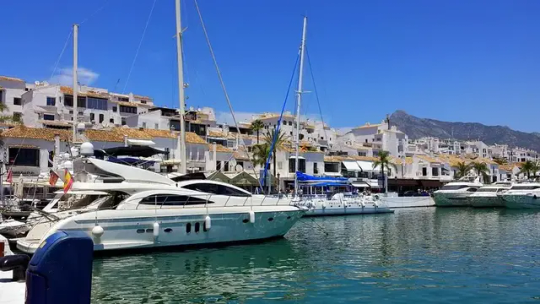
photo credit: Tina P
The Puerto Banus marina is a landmark for millionaires' yachts and an iconic place in Marbella. Its trendy atmosphere and posh reputation have attracted the international jet set year after year, as well as the most affluent vacationers: the streets are indeed lined with luxury boutiques and gourmet restaurants.
The Museum of Contemporary Spanish Engraving
If you are a lover of engravings, it is very likely that you will fall under the spell of the Museum of Contemporary Spanish Engraving in Marbella. In this historic Renaissance, the building exhibited various engravings, many of which were made by Picasso. The museum also organizes workshops and conferences to deepen the experience in this temple of engraving, a true national reference in this field.
Arabian fortress of Marbella
If you thought there were no historical monuments in Marbella, think again! The Arab fortress and its medieval walls are a perfect example of this, and a good example of the Muslim influence on the city's architectural identity. It is possible to visit them with a guide and learn more about this little-known facet of one of Spain's most famous seaside resorts.
Must-see places in Malaga
The birthplace of the famous painter Pablo Picasso, the port city of Malaga is inseparable from the Costa del Sol. So much so that it is for many its emblem, with its coveted urban beaches, its precious historical monuments, and its mythical medieval walls. There is so much to discover in this famous Andalusian city: here are the main places you must visit during your stay.
Málaga's Alcazaba Citadel

photo credit: Colin Hepburn
History buffs will be thrilled to see the iconic Alcazaba citadel in Málaga. This fortress was built during the Islamic era in Spain and features elements typical of the Arab architecture that is widespread in this region of Spain. You can visit it from the inside, and appreciate the remarkable preservation of its foundations, but also walk through the beautiful gardens that border the building. Finally, you'll find the remains of a Roman amphitheater at the foot of the citadel, as well as several fascinating historical museums in the surrounding area. Add to this an overlooking view of the city, and you have one of the most visited places in Malaga!
Malaga Cathedral

photo credit: Matthias Patzold
This is another emblematic monument of Malaga. The city's great cathedral was built in the 16th century, and its construction is said to have taken more than 250 years! When you arrive in front of this stone giant, you can't help but be overwhelmed by the majesty of this building with its atypical and refined architecture!
At the heart of the building, you can observe the magnificent Renaissance ornaments, before reaching the roof and enjoying the spectacular view of Málaga, and then take your camera to immortalize the moment.
Finally, to conclude your visit, take a detour to the cathedral's gardens, which are accessible free of charge. An enchanting stroll to contemplate the building from all angles.
Picasso Museum in Malaga

photo credit: Teelicht
This is one of those places that you would dedicate a whole day to visit, because it is so fascinating! The Picasso Museum in Malaga traces the career of the famous Spanish painter, known worldwide for his paintings such as Guernica and Les Demoiselles d'Avignon. Located in the heart of the magnificent Buenavista Palace, a historic building built in the 16th century, this museum exhibits more than 200 works by the artist in 11 different rooms. Here you can see the first childhood works of the man who was nicknamed "Little Goya", and understand the evolution of his style over the years.
Atarazanas Market

photo credit: Edgar I
If you want to meet the local producers of Malaga, what better way than to go to the famous Atarazanas market? Located in the heart of the city, in an old shipyard building with magnificent glass roofs, it is a friendly and popular place where locals gather in search of fresh products and good deals.
Malaga's beaches

photo credit: Mateusz jagiela
Malaga's coastline is a true paradise for vacationers seeking relaxation and for lovers of water sports. Between the pebbled and fine sandy beaches, the popular beaches, and the more discreet coves, it is impossible not to find the ideal place to lay down your towel. For example, you can rest on the soft sand of the Penon del Cuervo cove, recognizable by its famous "crow's rock" that seems to attract sand like a magnet or have fun with the kids on the Burriana playa, one of the most famous in Andalusia. Near the beach, there are rental services (kayaks, jet skis...), showers, toilets, and traditional beach restaurants.
Pompidou Center of Contemporary Art of Malaga

photo credit: Mike Fitzpatrick
If the weather turns bad, a visit to the Pompidou Center of Contemporary Art in Malaga could be a good alternative to the beach. This fascinating place gathers a large collection of contemporary works, which you can discover with your family. An original and entertaining visit!
Botanical garden "La Concepcion"
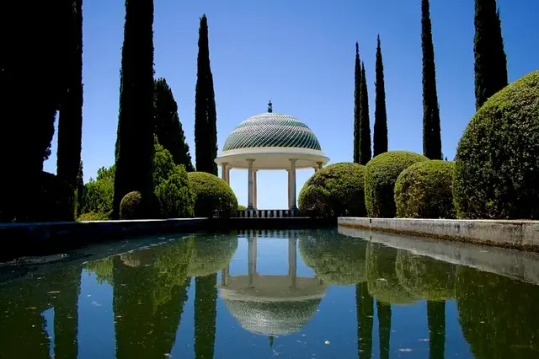
photo credit: Stefan Schinning
La Concepcion Botanical Garden is one of the most beautiful gardens in Europe, covering almost 3 hectares. It is inspired by ancient times and has more than 2,000 different varieties of plants from all over the world. This landscaped park has also been declared a historical and artistic garden since 1934: one thing is sure, you won't be disappointed with your visit!
The must-sees in Ronda
Proudly standing atop a mountain, the small town of Ronda is one of the most authentic on the Costa del Sol. Relatively far from the coast, people come here mainly to enjoy the calm of the interior and the preservation of mass tourism. The cultural visits to Ronda can be done in one day.
The New Bridge

photo credit: Visual coyote
A great symbol of the city of Ronda, the New Bridge was built in the eighteenth century and required more than 40 years of work. It is a privileged point of passage to the new town from the old town, and is almost 100 meters high, offering a dazzling view of the Tajo Valley. To take perfect shots of this grandiose structure, you will find many viewpoints at the foot of the New Bridge.
Moorish King's Palace

photo credit: Bernhard Niedermeier
Superbly located in the middle of the peaceful countryside of Ronda, the Moorish King's Palace is a sumptuous eighteenth-century residence surrounded by magnificent hanging gardens. The interior of the palace cannot be visited, but the green space that surrounds this monument is worth the detour alone: it includes the Mina de Agua, an avant-garde water pumping system that once drew its source from the River Guadalevin. The park, designed by the French landscape architect Jean-Claude Forestier, is an invitation to stroll and relax.
Plaza Duquesa de Parcent

photo credit: Domenico T
It is impossible to pass by the Plaza Duquesa de Parcent without stopping by when visiting Ronda. You are bound to fall in love with its unique charm and its fabulous monuments, including the town hall and the church of Santa Maria la Mayor. The latter building, of Gothic and Renaissance style, took more than 200 years to be built and is a must-see when you come here.
Mondragon Palace

photo credit: Alan Cordova
A former royal residence built in the fourteenth century, the Mondragon Palace is a marvelous monument of Renaissance and Moorish style. Inside, you will find a museum with exhibits that trace the history of the town of Ronda. Afterward, stroll through the gardens of Mondragon, and enjoy the privileged view of the old city.
Ronda bullring

photo credit: bestCityscape
Emblematic of the city's bullfighting culture, the Ronda bullring was built in 1785 and is one of the oldest bullrings in Spain. With a total capacity of 5,000 spectators, these stands are now open to visitors who can visit the central sandy ring and the bullring's historical firearms museum.
The must-sees in Benalmadena
Benalmadena, the last town in our selection, has everything you could wish for when you go on vacation to the Costa del Sol. No doubt that its paradisiacal beaches, its fascinating cultural visits, and the comfort of its tourist infrastructures will make you fall under its charm!
Benalmadena cable car
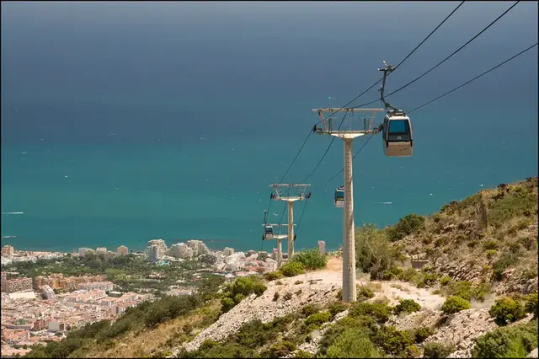
photo credit: Steeedm
To climb the 780-meter-high Calamorro mountain, the cable car of Benalmadena is certainly the most comfortable and practical solution. During the 15-minute ride, you will enjoy an incredible view of the city and the sparkling blue of the Mediterranean under the sun. On a clear, sunny day, you can even see the Moroccan coast!
Once you have reached the highest point, go to the Valley of the Eagles to watch the birds of prey shows. An activity that will surely delight young and old!
Colomares Castle

photo credit: RPM
It is one of the most refined monuments in the city of Benalmadena. Built in 1987, in honor of the famous navigator Christopher Columbus, the Colomares Castle has an unusual architectural structure and elements of Byzantine, Gothic, neo-Mudejar, and Renaissance styles. A monument like no other!
Bil-Bil Castle

photo credit: Paul Smeets
A surprising red residence in the middle of palm trees... No doubt about it, you are in the Bil-Bil castle. Built at the end of the 1920s for a French bourgeois family, it now serves as a municipal cultural center and wedding reception venue. Once inside, you'll be amazed!
Benalmadena Pueblo
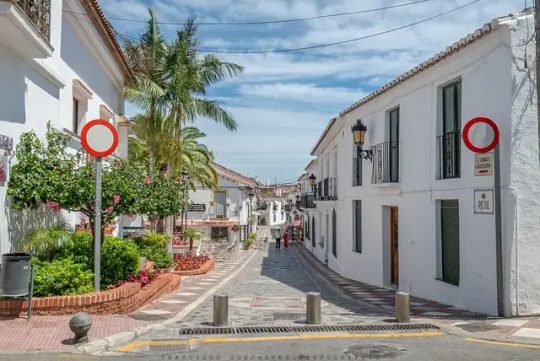
photo credit: Francisco Goncalves
An enchanted interlude a few kilometers from downtown, Benalmadena Pueblo reveals to curious visitors the more picturesque face of this large seaside resort. We like to lose ourselves in its charming and poetic streets and contemplate the traditional houses with their whitewashed walls. A perfect place to take unforgettable pictures of your vacation!
If you pass by the Plaza de Espana, you will probably notice this statue of a little girl holding a shell in her hands. It is the Nina de Benalmadena, a bronze sculpture symbolizing the friendly and benevolent look that the locals have towards the tourists. Here, conviviality is the rule, and you will be welcomed as if you were at home!
Mariposario Butterfly Park

photo credit: Mariposario de Benalmadena
To conclude your stay with unusual activity, take a detour to the Mariposario Butterfly Park in Benalmadena. This large tropical aviary of 900 m2, located right next to a Buddhist temple, is home to more than 1,500 butterflies of 150 different varieties from around the world. In Europe, you will not find such a concentration of lepidopterans: it is a unique terrarium by its size, a must-visit!
Practical information for a dream stay on the Costa del Sol
How to get around the Costa del Sol?Once there, you will have the choice between the car and public transport. If you are traveling alone and light, you should take the bus because it will be cheaper than renting a car.
If you are coming with your family, then it is better to rent a car. You will have a lot of freedom in your travels, and the prices will be proportionally lower than those of public transport if you are numerous (about 6 € per day).
Read the full article
1 note
·
View note
Text
What to see in Malaga in two days
What kind of city
Malaga is one of the Andalusian cities in southern Spain and is located in the center of a resort on the Mediterranean coast called Costa del Sol. Famous as the city where the genius painter Pablo Picasso was born, it is also a city with many attractions , like historical buildings.
What are the highlights?
The Cathedral of the Incarnation, a symbol of Malaga, is one of the highlights of the city. The Gibralfaro and Alcazaba castles, built during the Islamic period, are located on high ground and are popular as picturesque locations overlooking the city port and the Mediterranean Sea.
Recommended gourmet
In Andalusia, you can eat cold soups called gazpacho and tortomon sacromonte, the traditional Granada egg dish. The dessert of rice and milk arosconleche is also recommended.
Malageta Beach
The first recommended tourist place in Malaga is "Playa de la Malagueta". It is said to be the center of the Costa del Sol. Due to the temperate climate, many tourists visit even in winter. Great access within walking distance of the city. There is also a cafe next to the beach, where you can get sardine skewers. A perfect place to spend some leisure time. Be sure to wear sunglasses because the sun is strong.
Malagueta Beach
Spain / Malaga
Paseo Marítimo Pablo Ruiz Picasso, 29016, Málaga, Spain
+34 951 92 60 20
http://www.malagaturismo.com/es/recursos-turisticos/detalle/playa-la-malagueta/739
Mercado de Atlanzas
The next recommended tourist place in Malaga is the Mercado de Atlanzas. The building is a 19th century building in a small market. It is also registered as a historic building. Many local ingredients are sold, mainly fresh food. Bright tomatoes and sweet peppers will be fun to watch. Meat and fish are also very abundant. Ali is also a way to enjoy cutting hams on the spot and snacking on snacks. Because it is indoors, you can enjoy shopping regardless of the weather.
Mercado Central de Atarazanas
España / Málaga
Calle Atarazanas, 10, 29005 Málaga, España
+34951 92 60 10
8: 00-15: 00
dia
http://www.malagaturismo.com/es/recursos-turisticos/detalle/mercado-central-de-atarazanas/455
La Malagueta Bullring
The next tourist place in Malaga is the Malagueta bullring. Although bullfighting culture is obsolete in the modern era, this bullring can only be seen in the brave battles during the summer months (June to August). Completed in 1870, this circular building is one of the most prominent in the city and can accommodate up to 14,000 people. You can actually see clearly from the Gibralfaro Castle Observatory, but once you get to the house, you want to see it once.
View this post on Instagram
A post shared by okamla (@okamia05) on Mar 26, 2020 at 3:18am PDT
youtube
1 note
·
View note